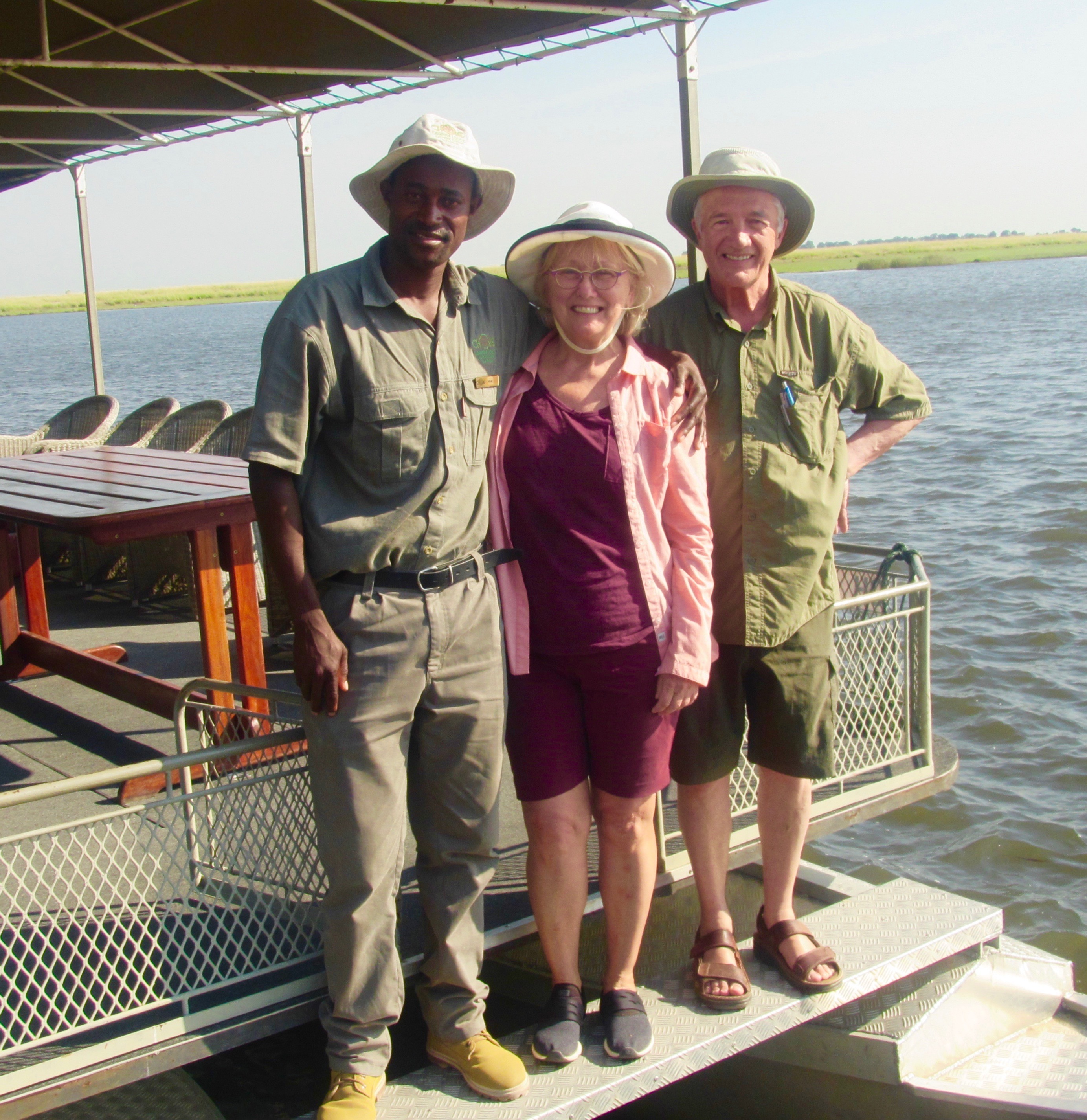Chobe River Wildlife – Elephants Everywhere
This is my second post on the Chobe River area that stretches along the Caprivi Strip which separates Namibia from Botswana. The first post featured the Chobe Savanna Lodge which, in my opinion, is quite simply one of the most wonderful places anyone could ever want to stay. This second post will feature the wildlife that one can expect to see on a visit to the Chobe River and why it is so different from any other African safari that I have ever experienced. Hope you’ll come along for the ride – on a boat and not a Land Cruiser.
I guess that’s the first thing that’s different about wildlife viewing on the Chobe River, you do it by boat and not by land. Although on the Botswana side there are roads and we did see people in Land Cruisers looking to find wildlife along the riverbanks, the reality is, in this area, you will see more from the boat than from inside a safari vehicle.
Chobe River Elephants
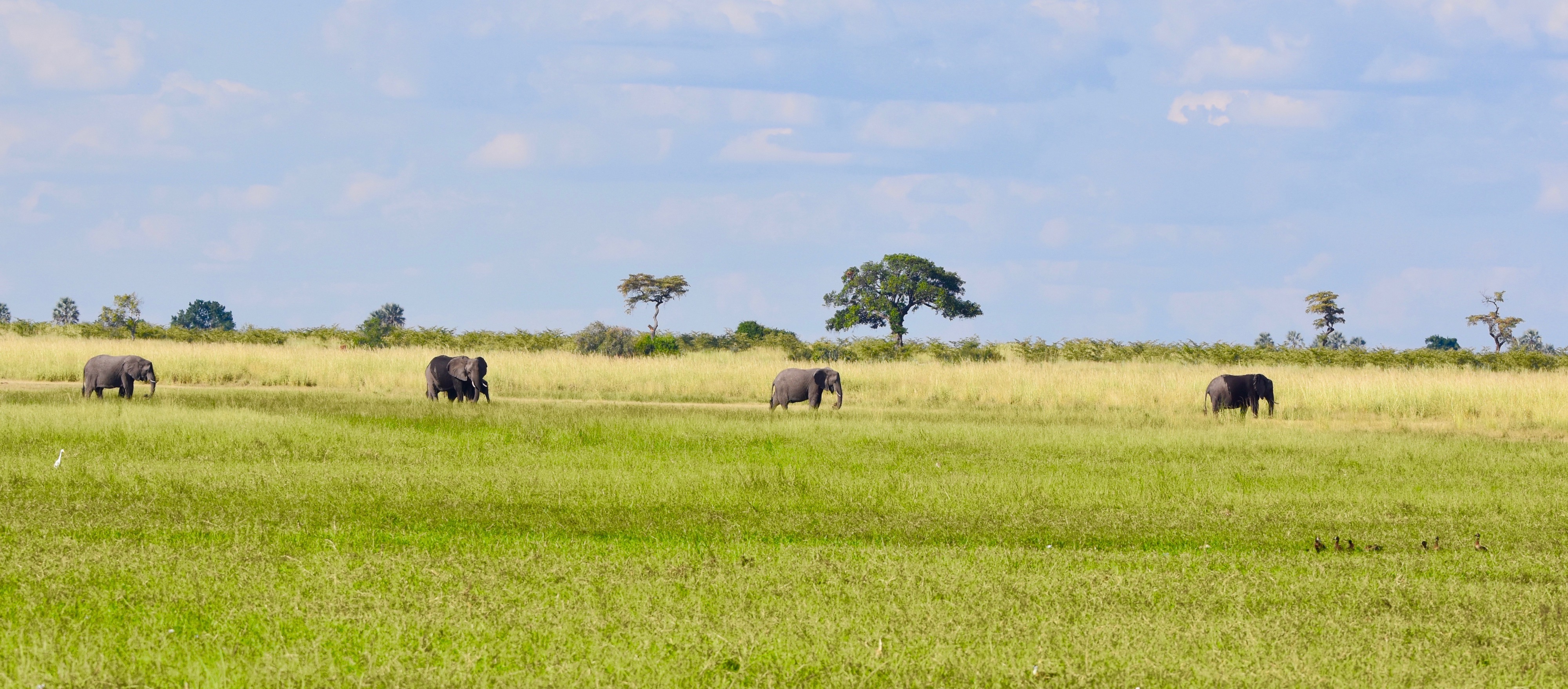
Here’s a simple fact. The Chobe River area has the largest concentration of African elephants in the world. Up to 150,000 of these largest of land animals live in relative peace on both sides of the river, crossing from one side to another at their pleasure. Regretfully we did not witness such a crossing, but as large as they are, they just seemed to appear out of nowhere right in front of the lodge.
This is a herd of about twenty on the Namibian side with more plus a whack of giraffes on the Botswana side with four safari vehicles in pursuit.
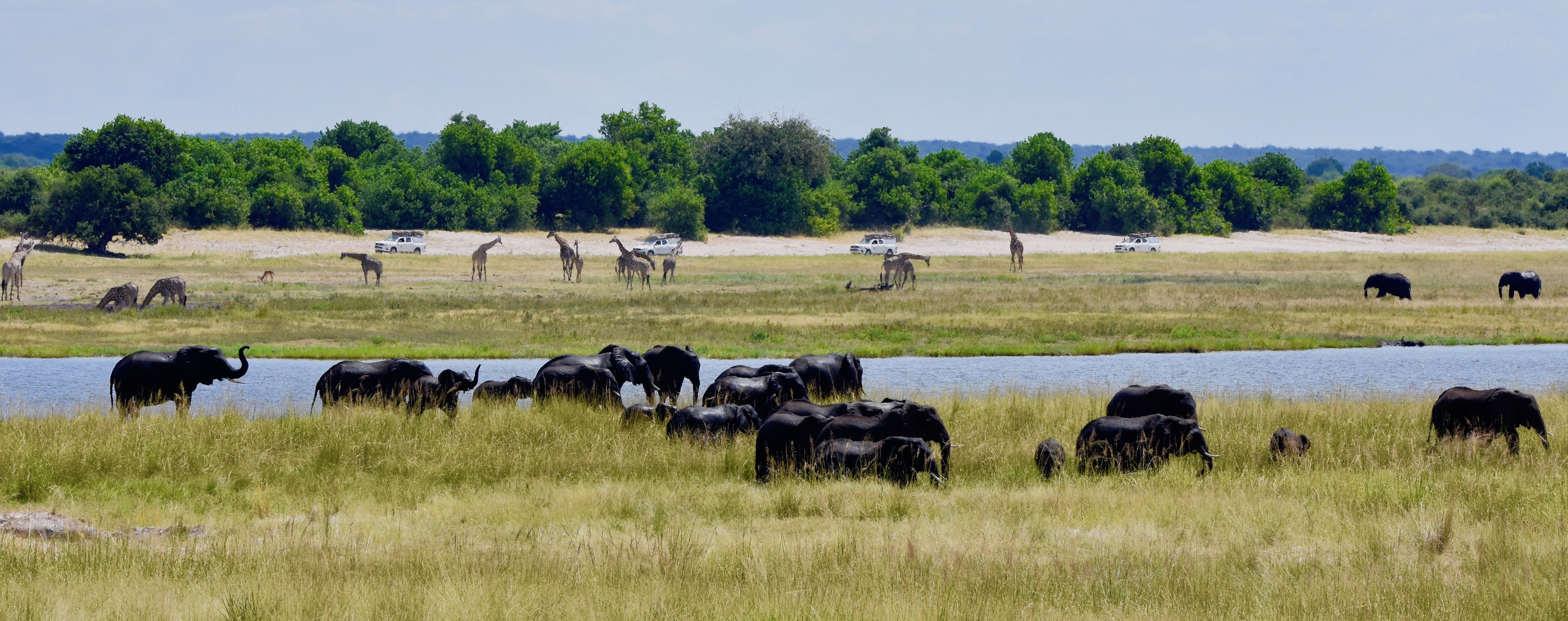
Elephants love water and we saw more than a few enjoying the cooling effects of the Chobe River while, in this case, trying to convince a very reluctant youngster that this was the place to be.
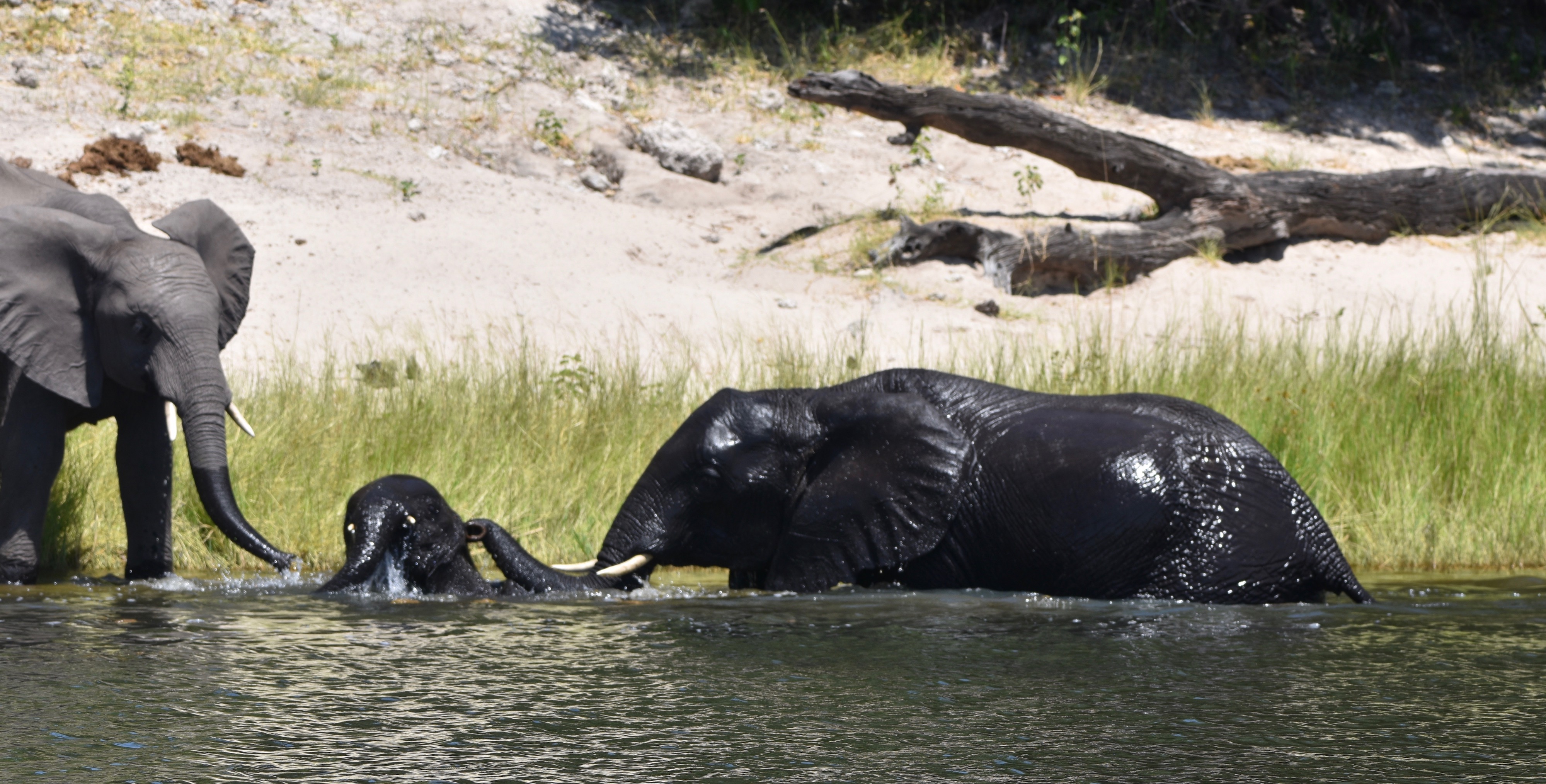
Can you tell how many elephants are in this photo? One more than it appears at first blush. Twins are quite rare in the elephant world, but we were fortunate to see such a duo and they both seemed to be thriving.
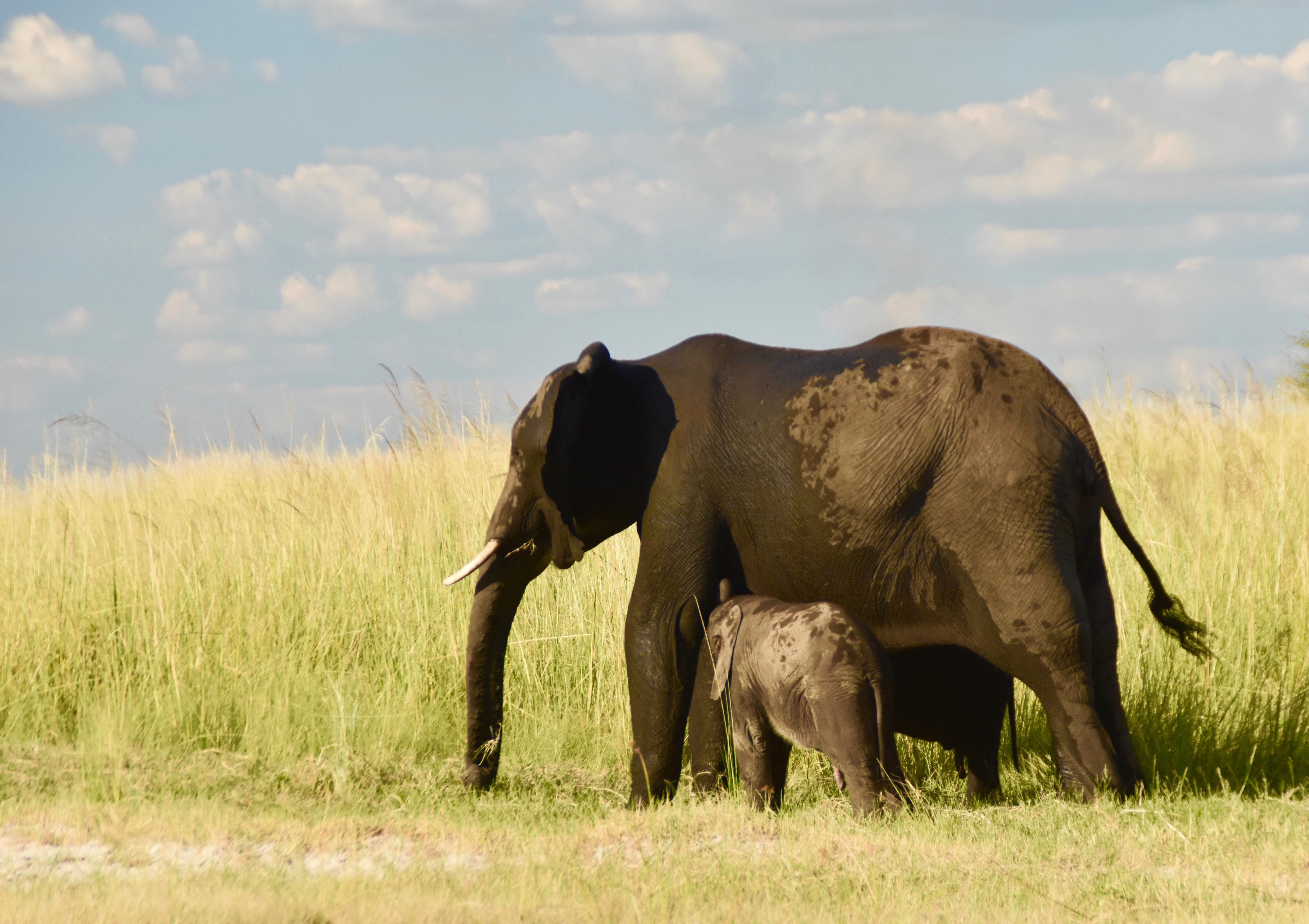
Elephants, with the exception of crabby old males, mix very well with other species including the notoriously bad tempered hippos. Presumably their sheer bulk precludes the hippos from acting up around them.
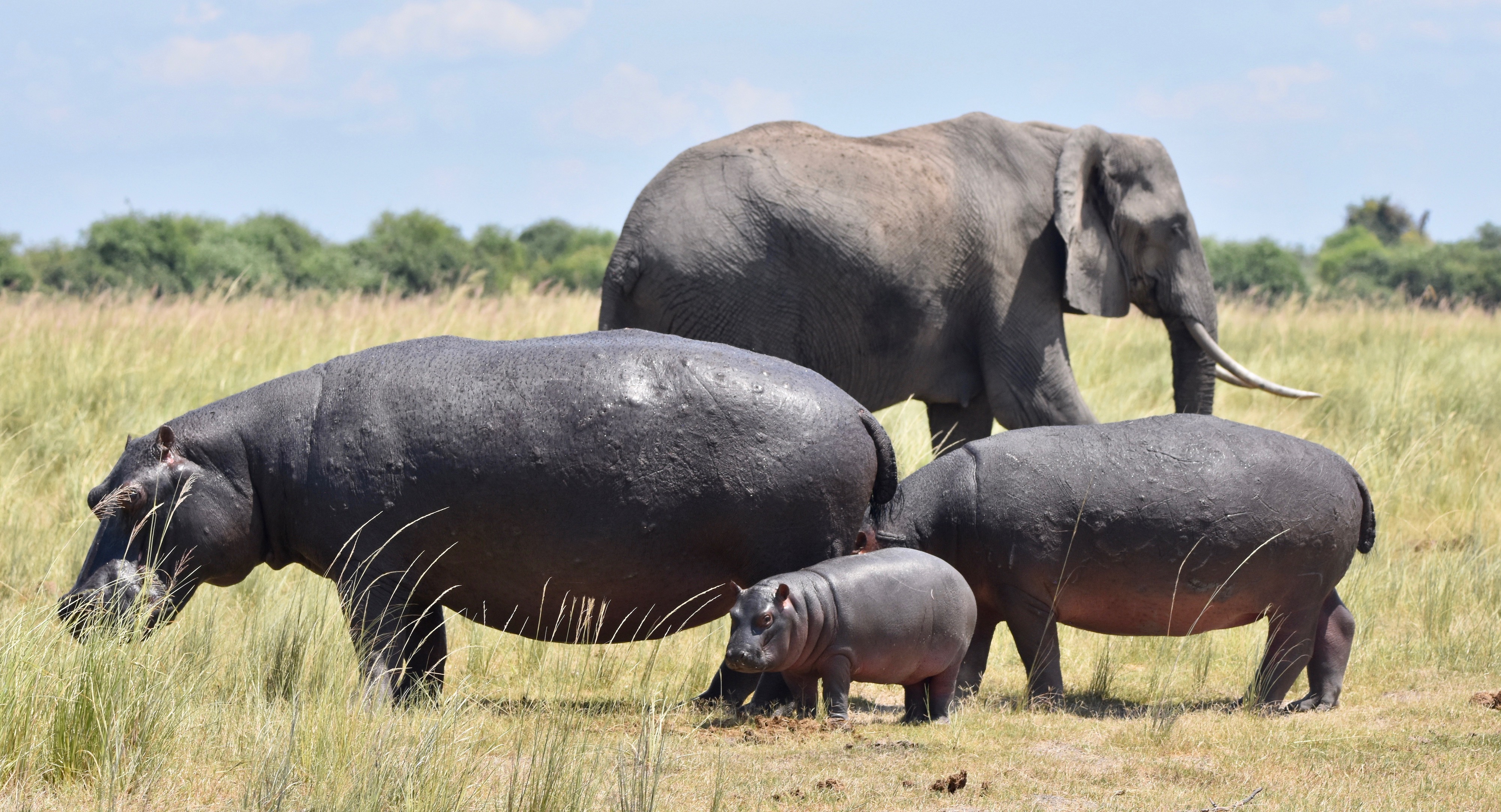
Speaking of hippos, isn’t this the most cuddly little critter you’ve ever seen? Not. Talk about a face only a mother could love!
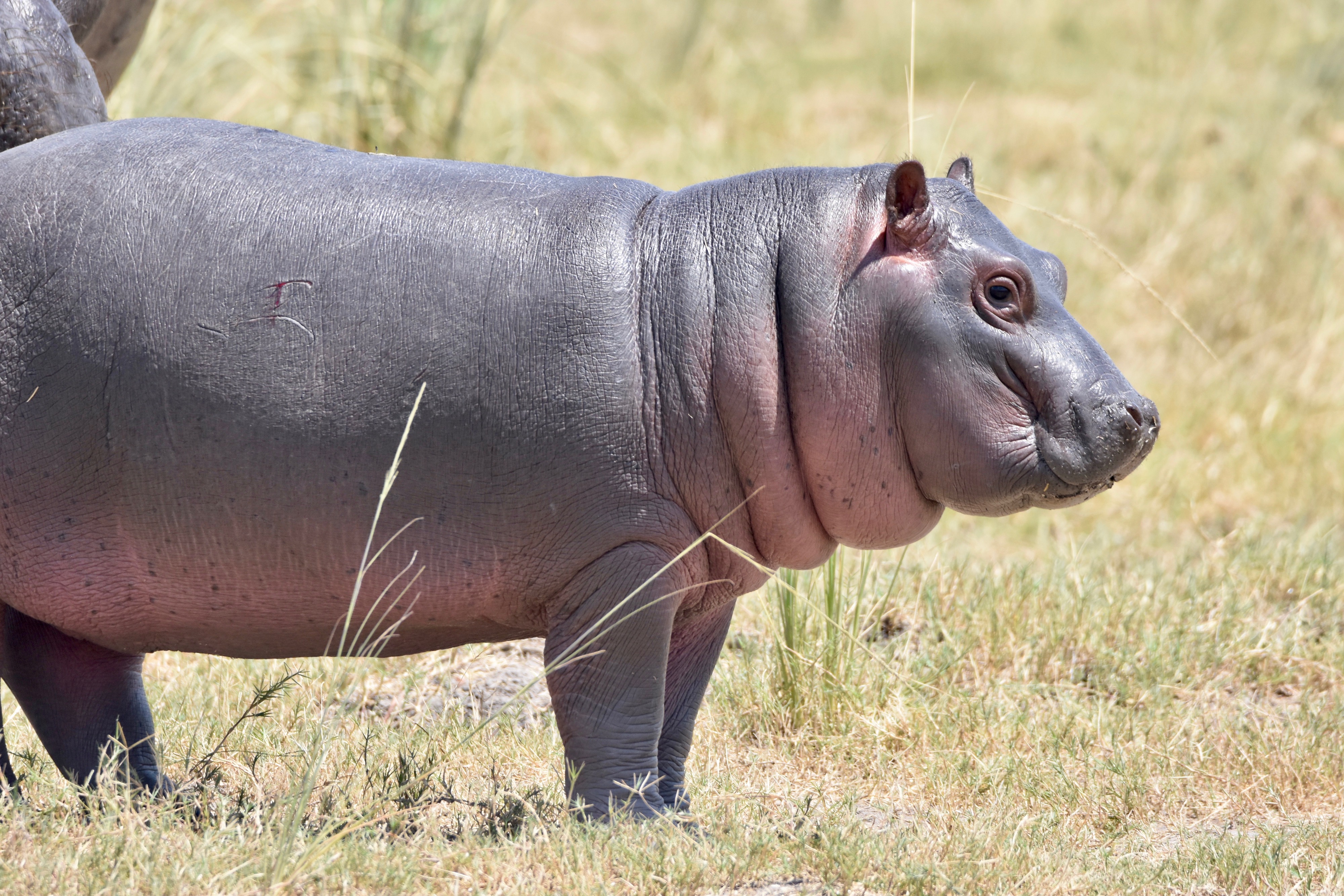
One final elephant photo and we’ll move on. This is a herd on the Botswana side of the Chobe River. The bottom line is, if you want to see elephants in the wild and in huge numbers, you must come to the Chobe River. I don’t believe you can see anything like this anywhere else in the world.
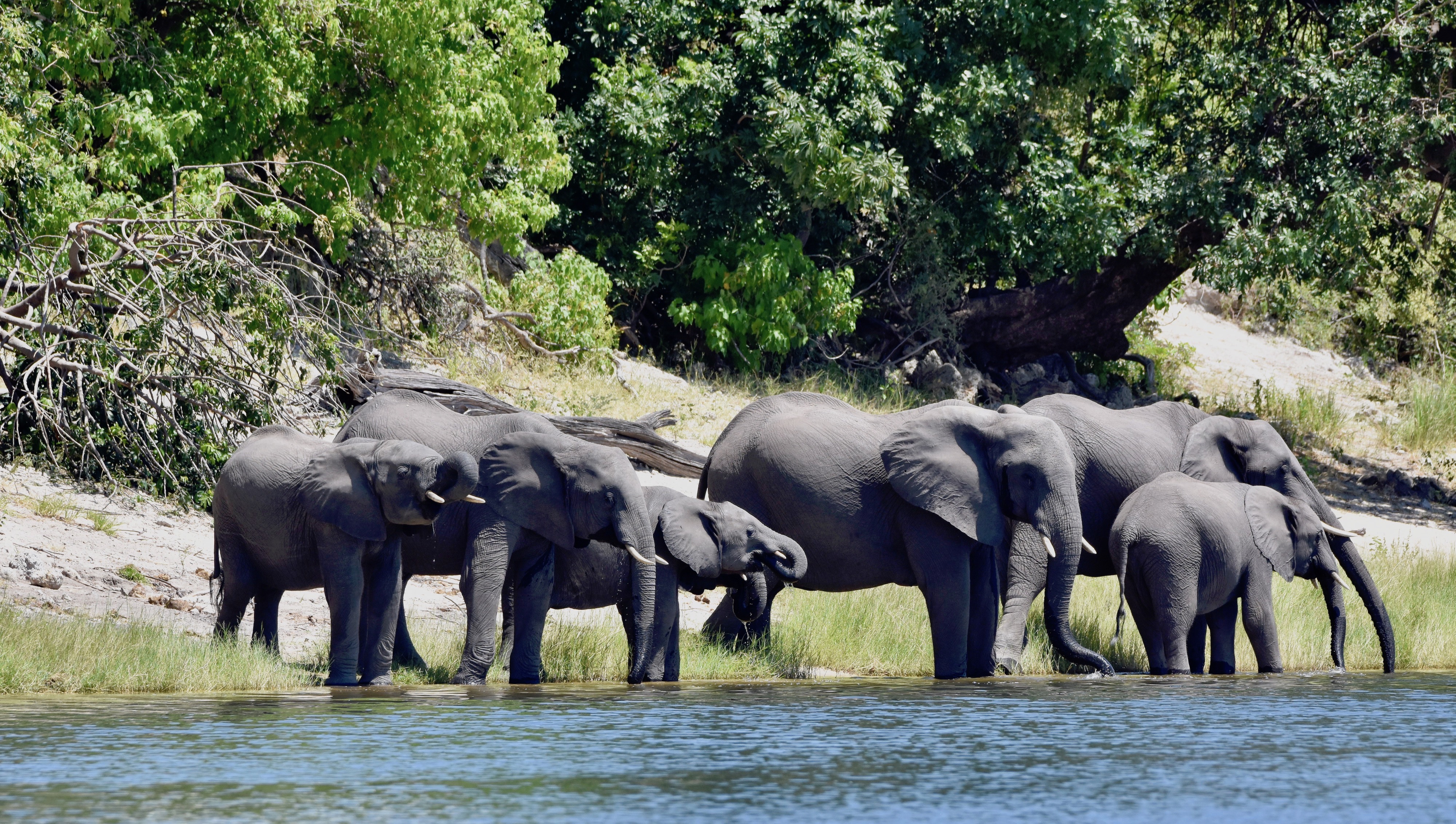
Chobe River Fishing Trip
The late, great Tony Bourdain’s TV shows often included, usually to his derision, a fishing segment, so I will emulate him and include one in this post, with the same results Tony usually got. On our arrival at Chobe Savanna Lodge I discovered that fishing on the Chobe River was possible and so asked our guide Felix Sitengu if we could take a stab at catching one of the most notorious freshwater predators in the piscatory world, the tigerfish. With a set of teeth that would make a barracuda envious, the tigerfish is one of the most sought after species in Africa and they live in the Chobe River.
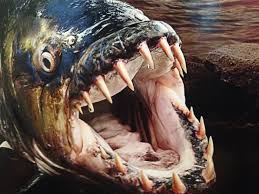
Felix told us that the best time of day to fish on the Chobe was at the break of dawn and sure enough he was rapping at our camp door while the sun was just thinking about rising.
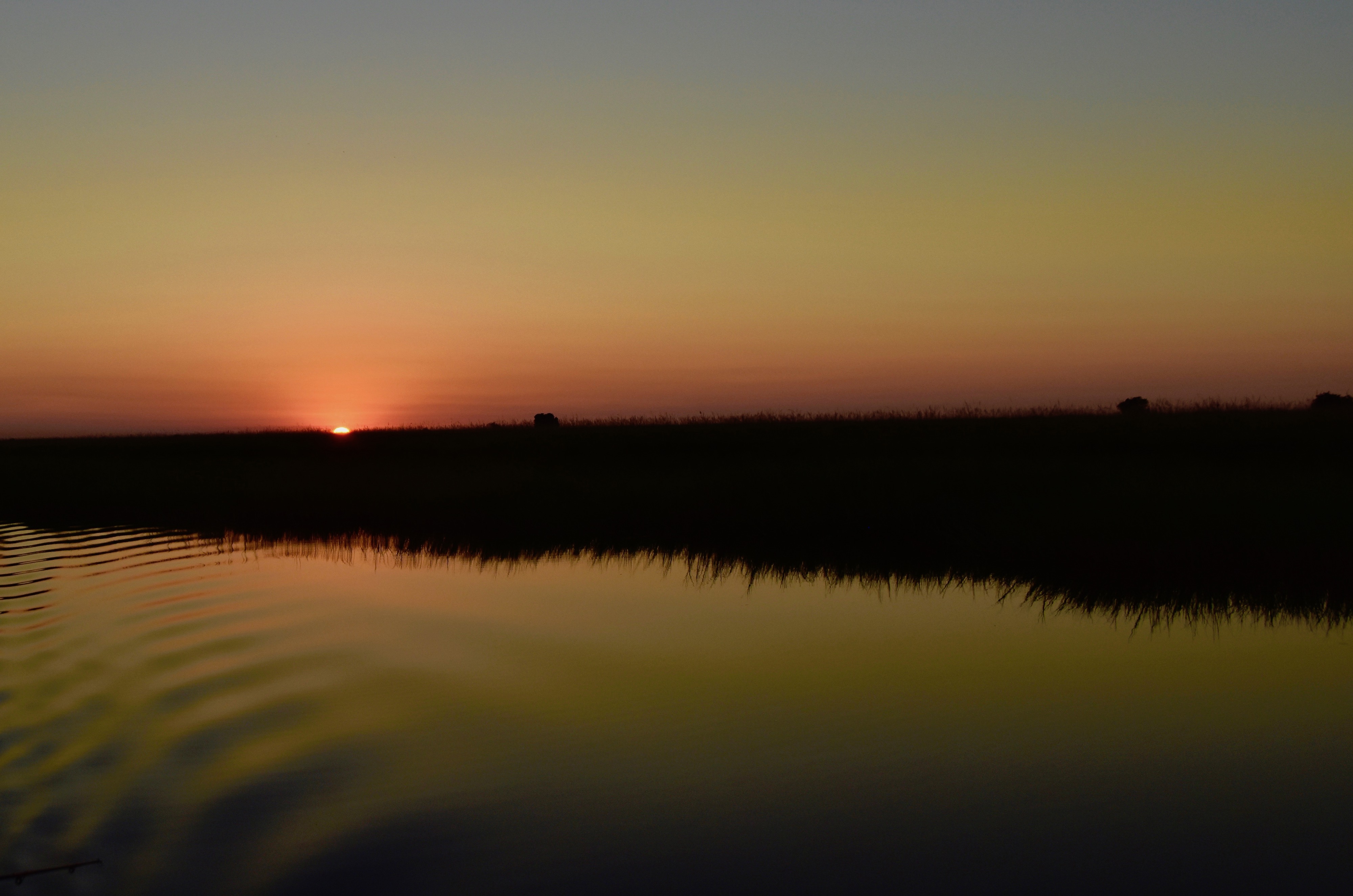
We used a small boat with only about a five horse power outboard and commenced to troll very slowly up and down the river. And we trolled and we trolled. Not a bite, but it was still great being out here, turning to avoid curious hippos that could easily have overturned the boat, while watching the herds of elephants along the riverbanks.
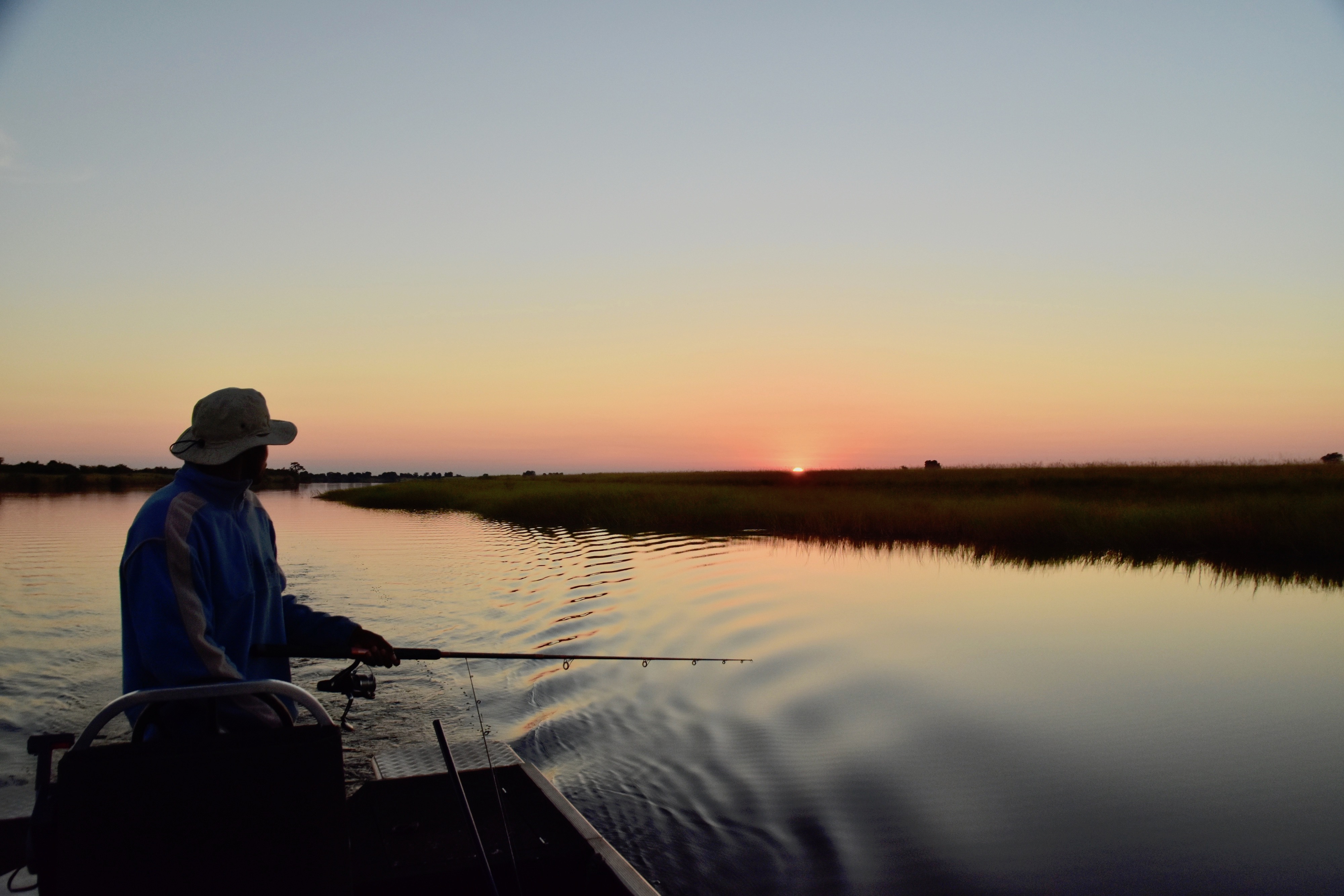
Then, while I was almost convinced that I was going to have the same success rate as Tony usually did, there was a strike and a fish was on the line. Funny, I thought tigerfish were supposed to be really great fighters while whatever was on the end of this line seemed rather lethargic in its efforts to escape. We did land the fish and in the interests of total transparency I will include a picture of this magnificent catch, the majestic African tigerfish – all ten inches of him. Felix looks too embarrassed to even look.
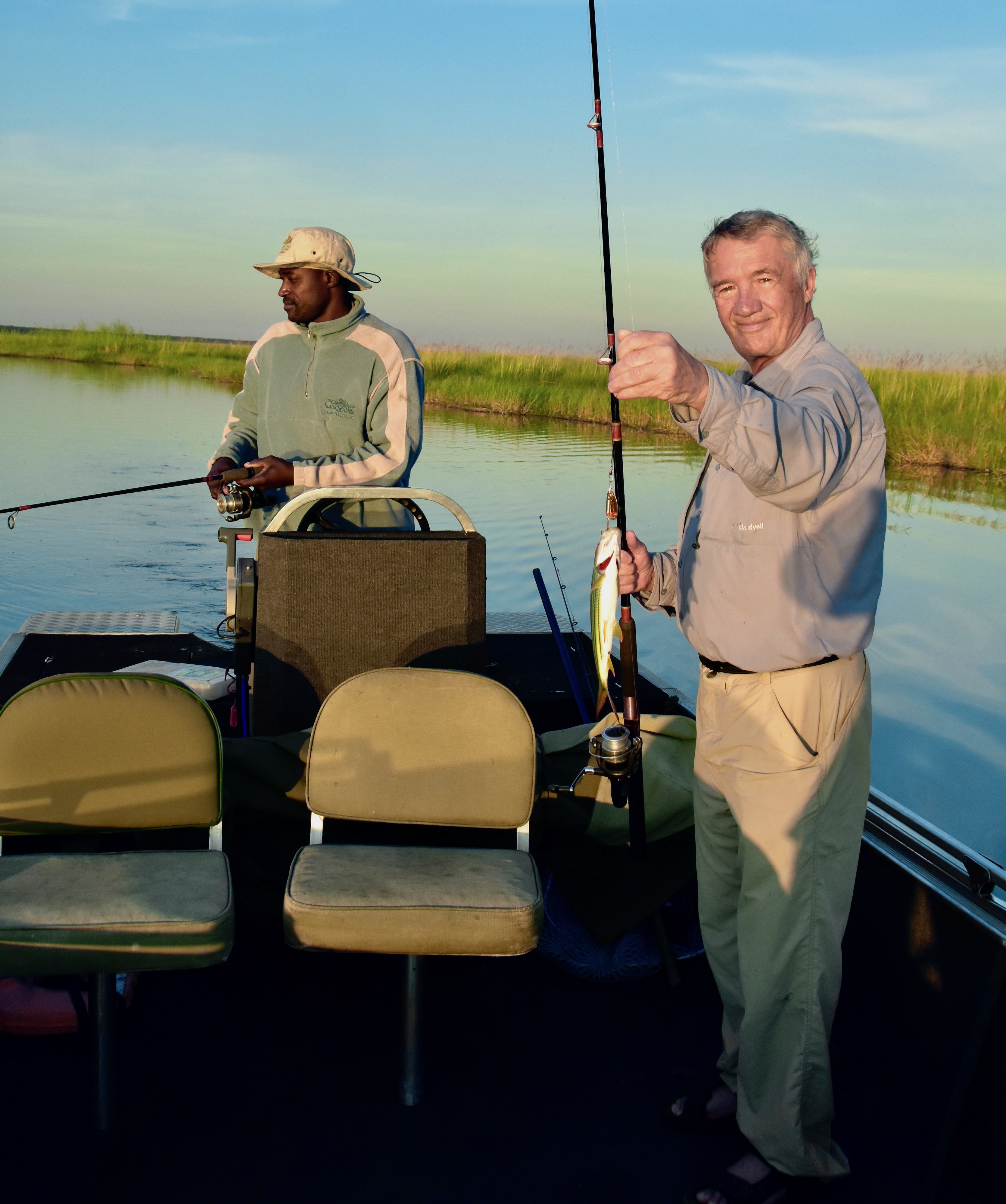
We released the little fellow in hopes that he would turn into a river monster one day. This was our only catch, but to paraphrase an old saying “Twas better to have fished and caught a minnow than not to have fished at all”.
Chobe River Reptiles
Besides being bitten by a tigerfish, there are other creatures lurking in and around the banks of the Chobe River that can be deadly. I refer of course to the Nile crocodiles that reach their largest size not on the Nile River, but rather throughout southern Africa. They sit on the riverbank basking with their mouths open in a smiley way that suggests, “Why don’t you come a little closer”.
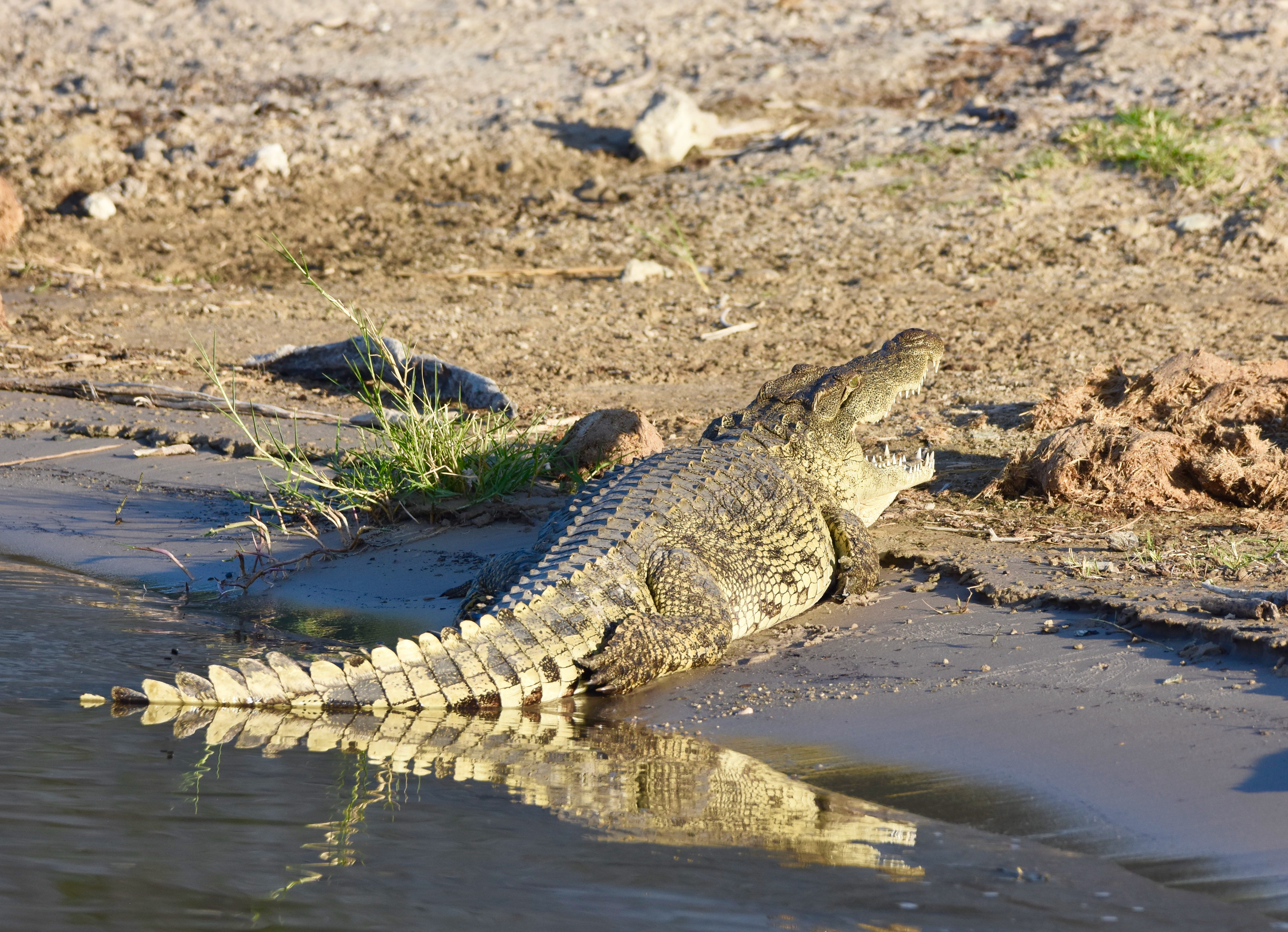
I’m not sure how long this guy was, but he was big.
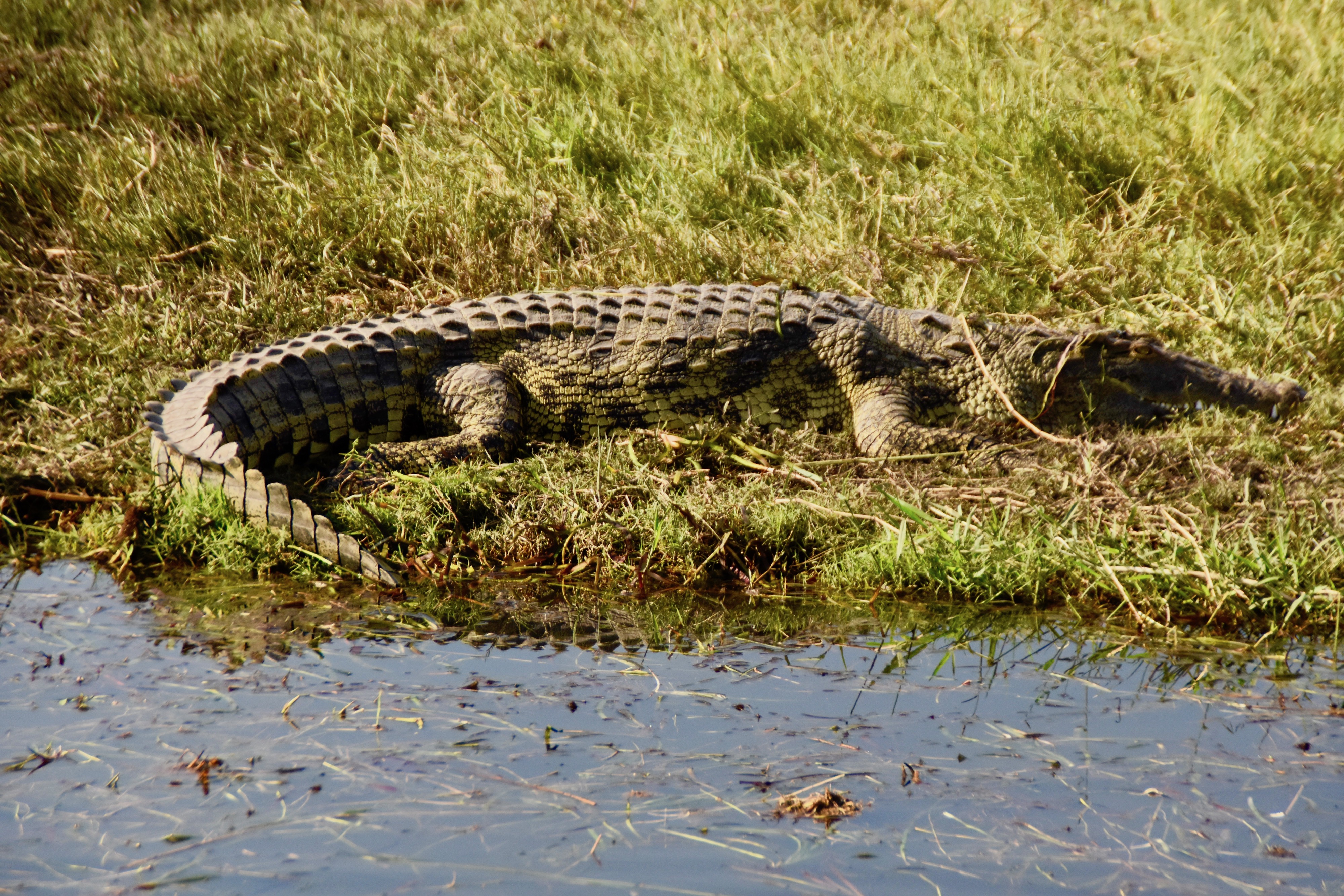
Occasionally you get to hear one roar which will scare the bejesus out of you if you are this close.
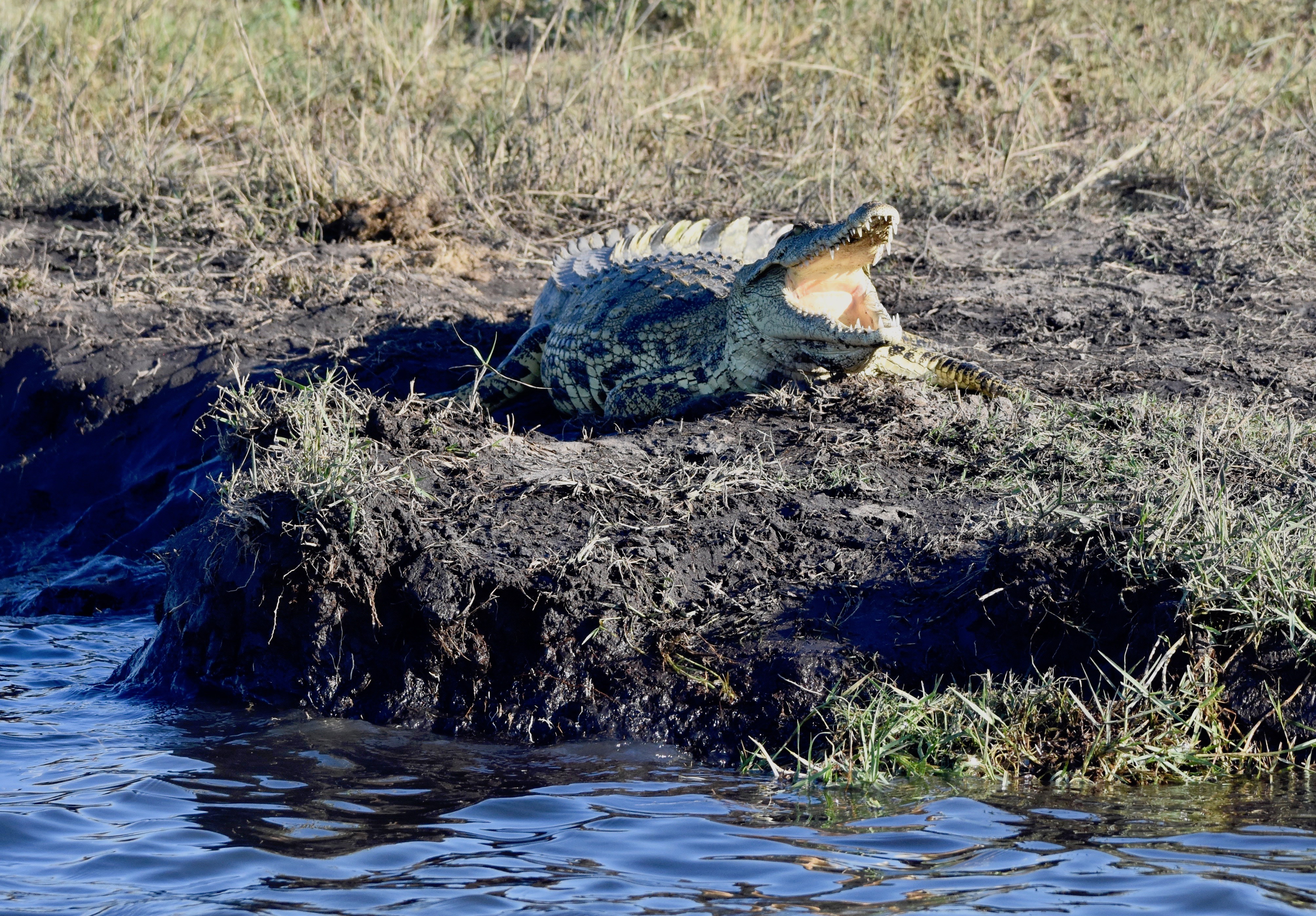
Crocodiles aren’t the only reptiles inhabiting the Chobe River. Water monitors are very common and act as controls on the croc population as their favourite food is the eggs of other reptiles, although they’ll eat anything they can catch. I guess they don’t need to worry about their cholesterol levels.
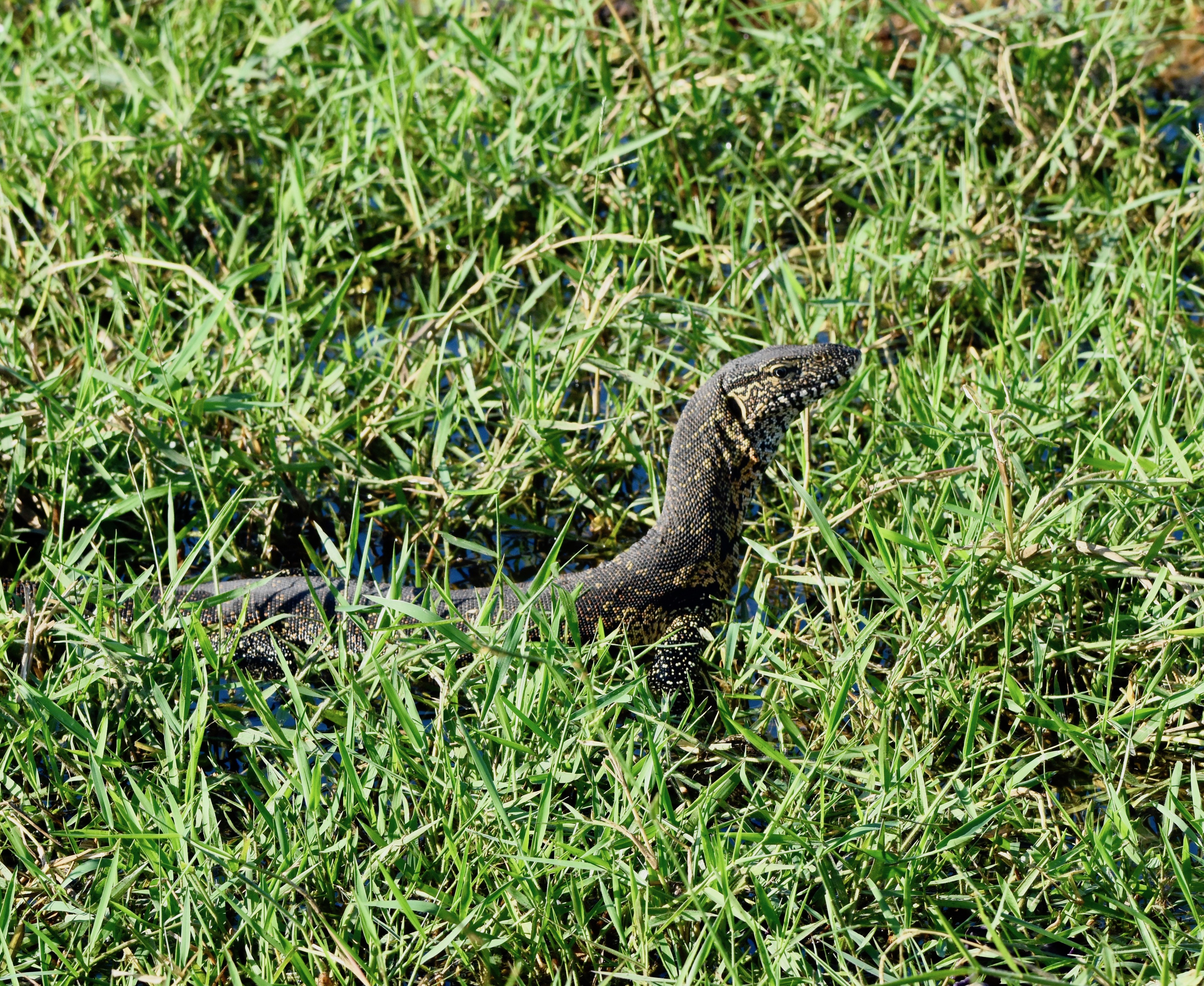
The crocs do get the last laugh as they will happily chow down on a water monitor if one comes too close.
Lunch on Board
In the previous post I noted that we were the only guests at the Chobe Savannah Lodge and that we were treated like royalty during our stay. Nowhere was that more apparent than at lunch on our second day there. Felix told us we would eat on the boat and when we showed up this was the set up.
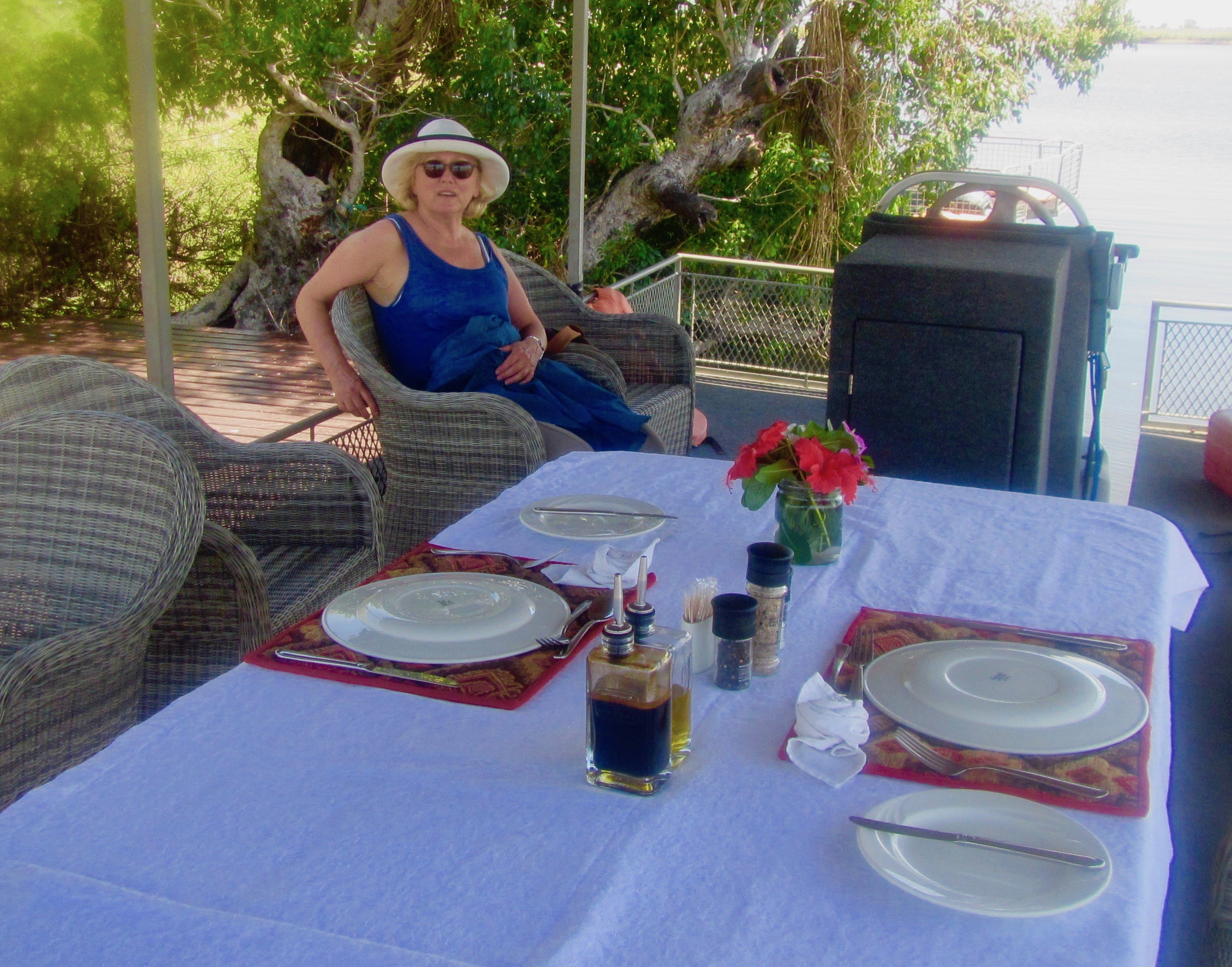
We enjoyed a great leisurely meal while gently cruising the waters of the Chobe River with scenes like these.
This is two juvenile impalas practising the techniques which they will need when they grow older if they are ever to have a harem of their own and pass their genes on to the next generation. In a year or so they’ll be doing this for real.
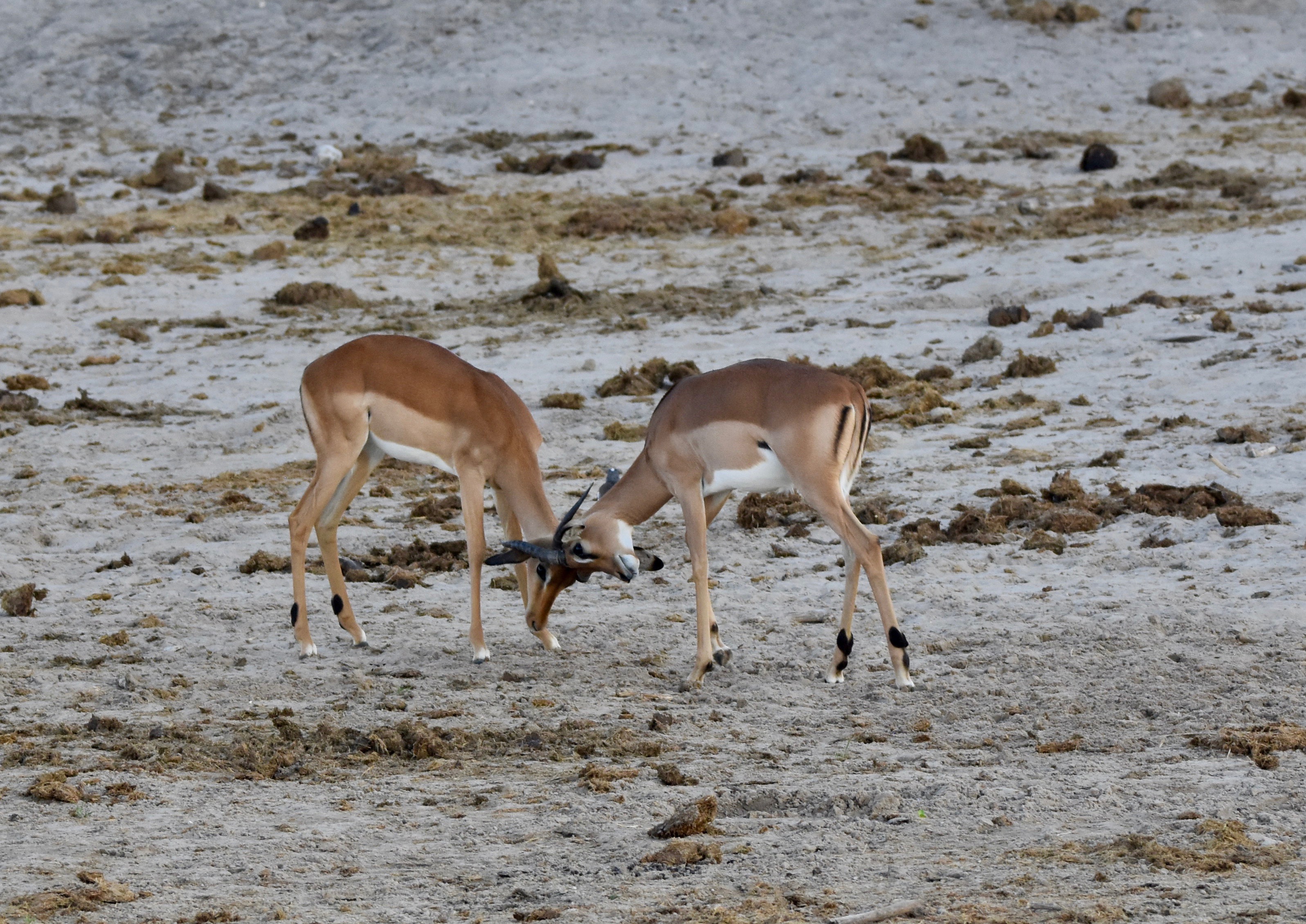
Wherever you find impalas along the Chobe River you will also find chacma baboons with whom they have a symbiotic relationship, both using their eyes and ears to guard against marauding leopards, lions, hyenas and eagles. They are endlessly entertaining to watch, especially if you are sipping a glass of fine wine on a boat only ten feet from shore. These three don’t seem to mind that they are sitting on a pile of fresh elephant dung.
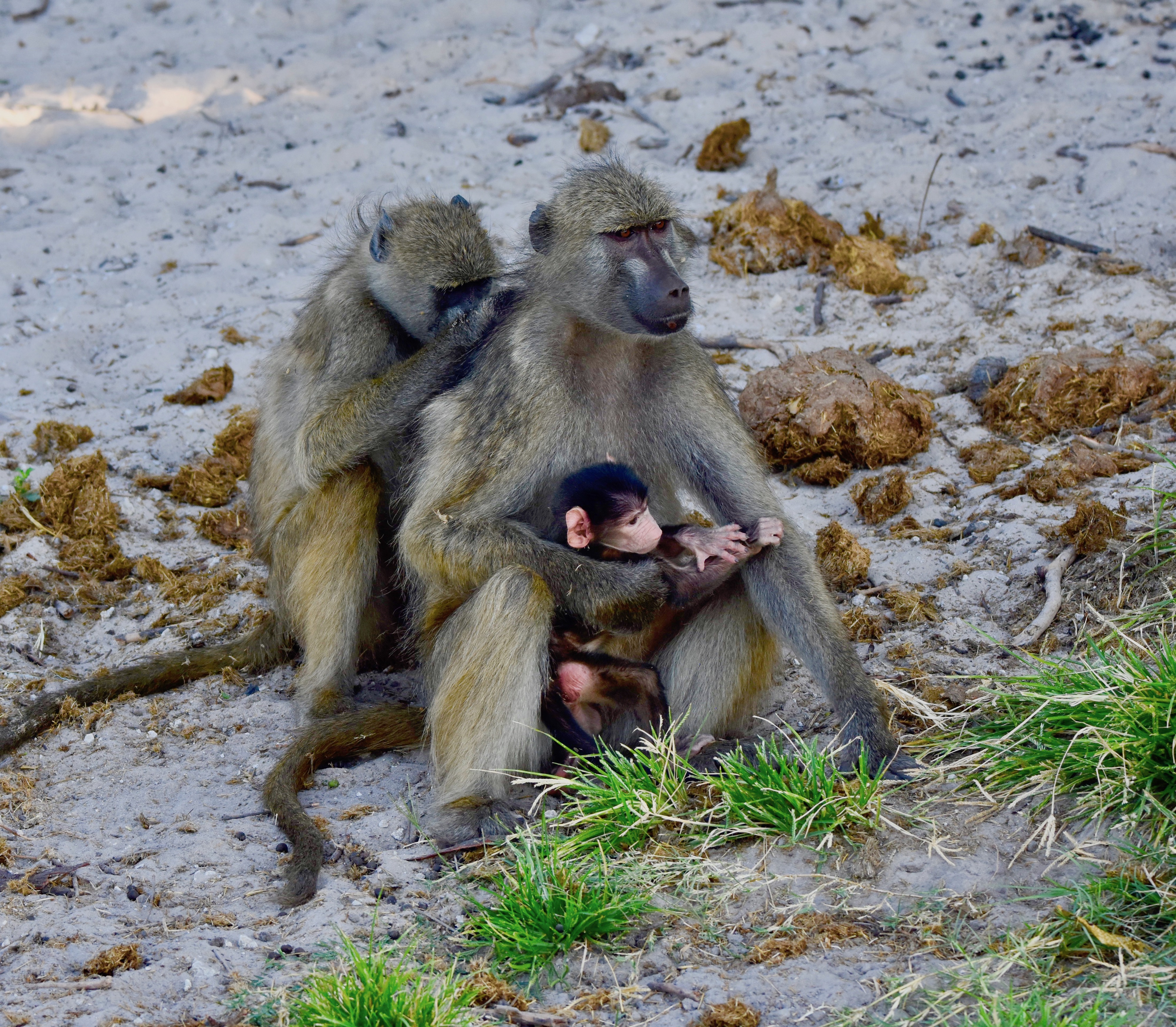
It was during this luncheon cruise that we ran into our five other Adventures Abroad mates from whom we had been separated at the Botswana border. They looked like they were having a good time, but certainly they didn’t have their own floating restaurant.
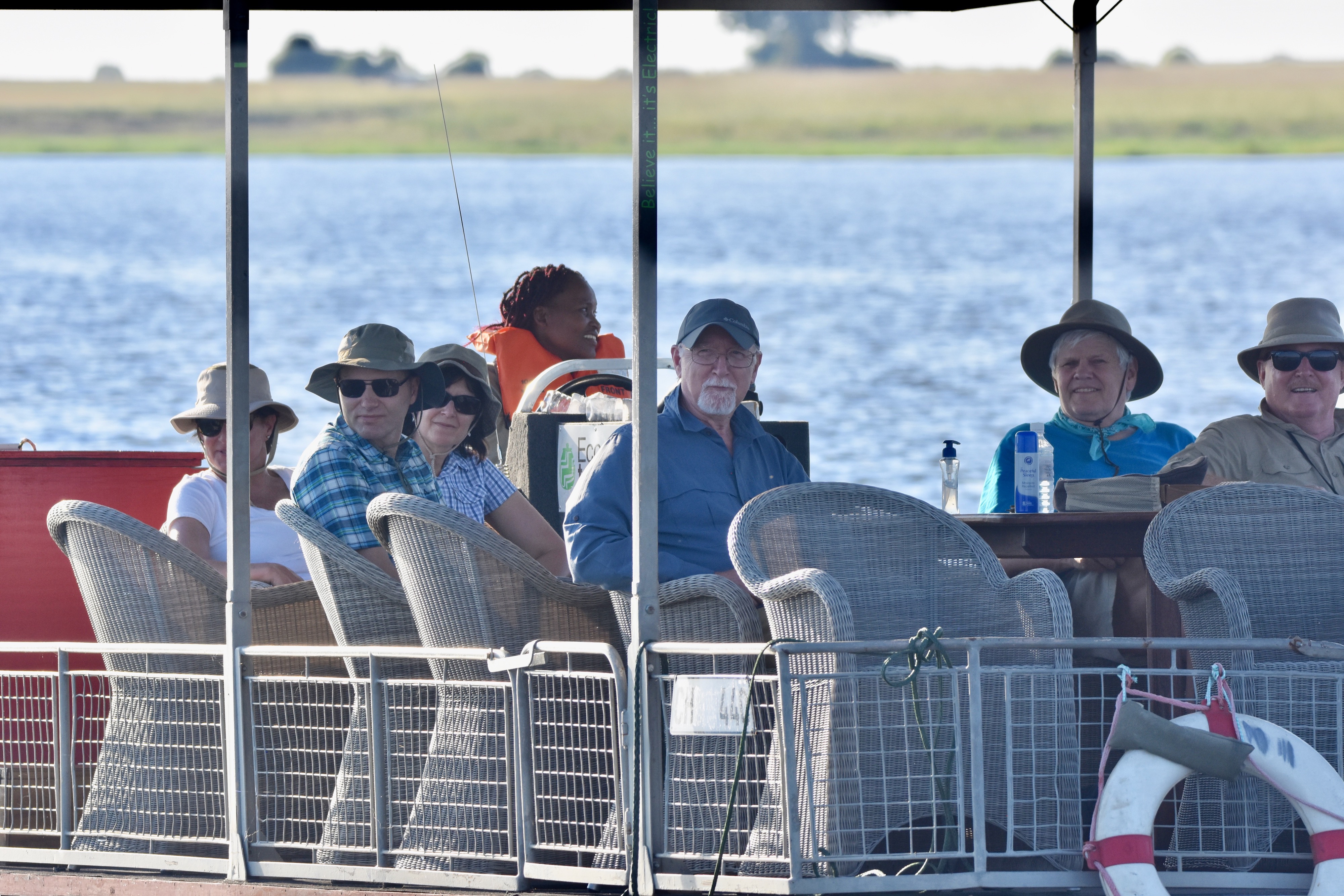
Avifauna of the Area
While most people go on safari to see the big five and other large mammals, Alison and I have always enjoyed the birds of Africa as much as any wildlife we see on these trips. The Chobe River was no exception, in fact, I would rate the birding here as good as any in Africa. Here’s why.
Let’s start with one of the most impressive of all the large predatory birds of Africa, the fish eagle. These birds have a passing resemblance to the bald eagle, but that is about all they have in common. Whereas the bald eagle is primarily a scavenger (something that Ben Franklin thought should rule them out as America’s national bird), the fish eagles of Africa are voracious and not only catch fish, but water birds, small crocs and even baboons. They are the national bird of Namibia.
They mate for life and we saw many pairs like this sitting high above the river ready to swoop down on whatever might come their way. Felix told us that if he caught a fish that was too badly injured to be released the fish eagles would gladly oblige him by taking it almost literally off his hands.
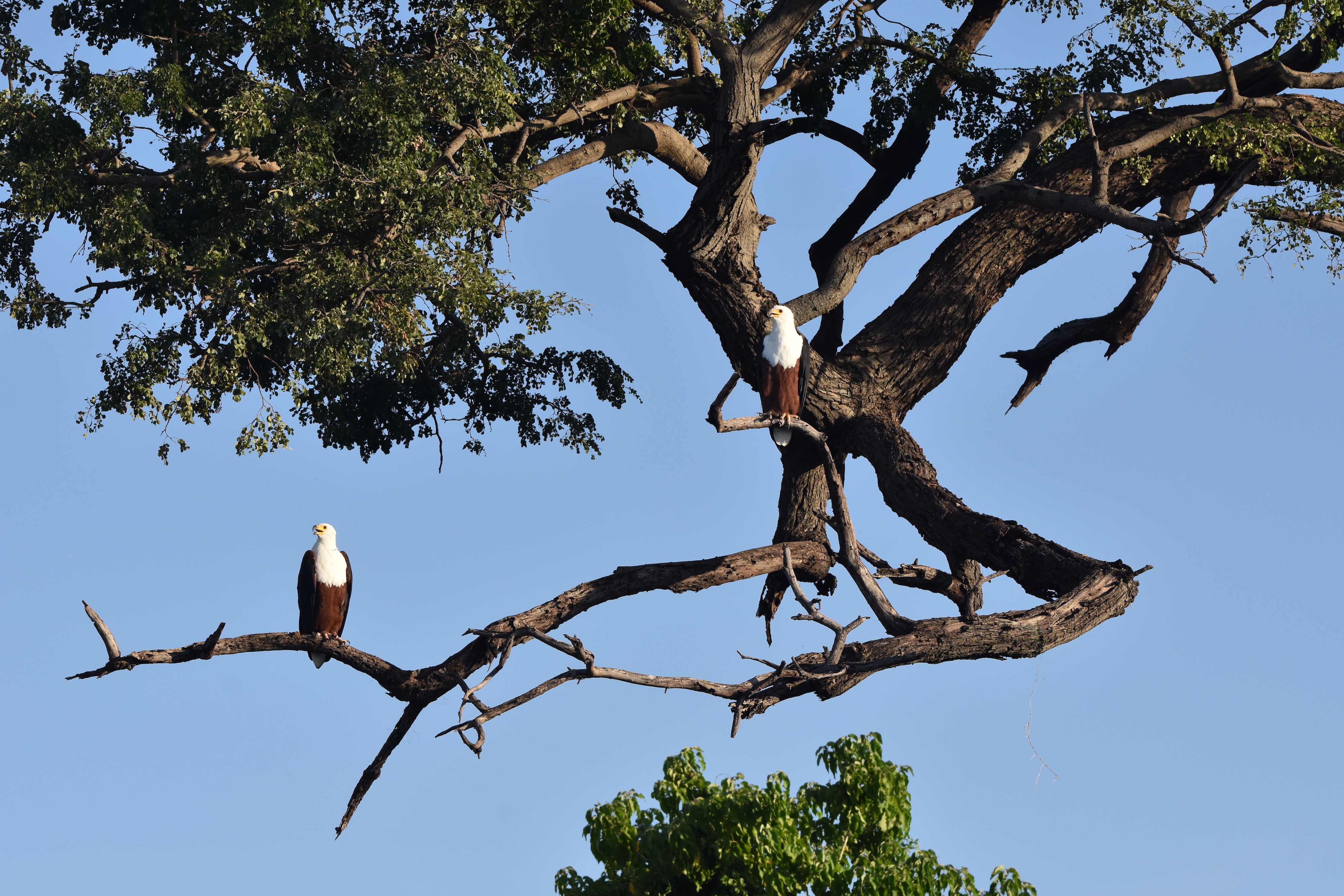
There’s something about a lone fish eagle sitting in the branches of a dead tree that brings out the best in any amateur photographer.
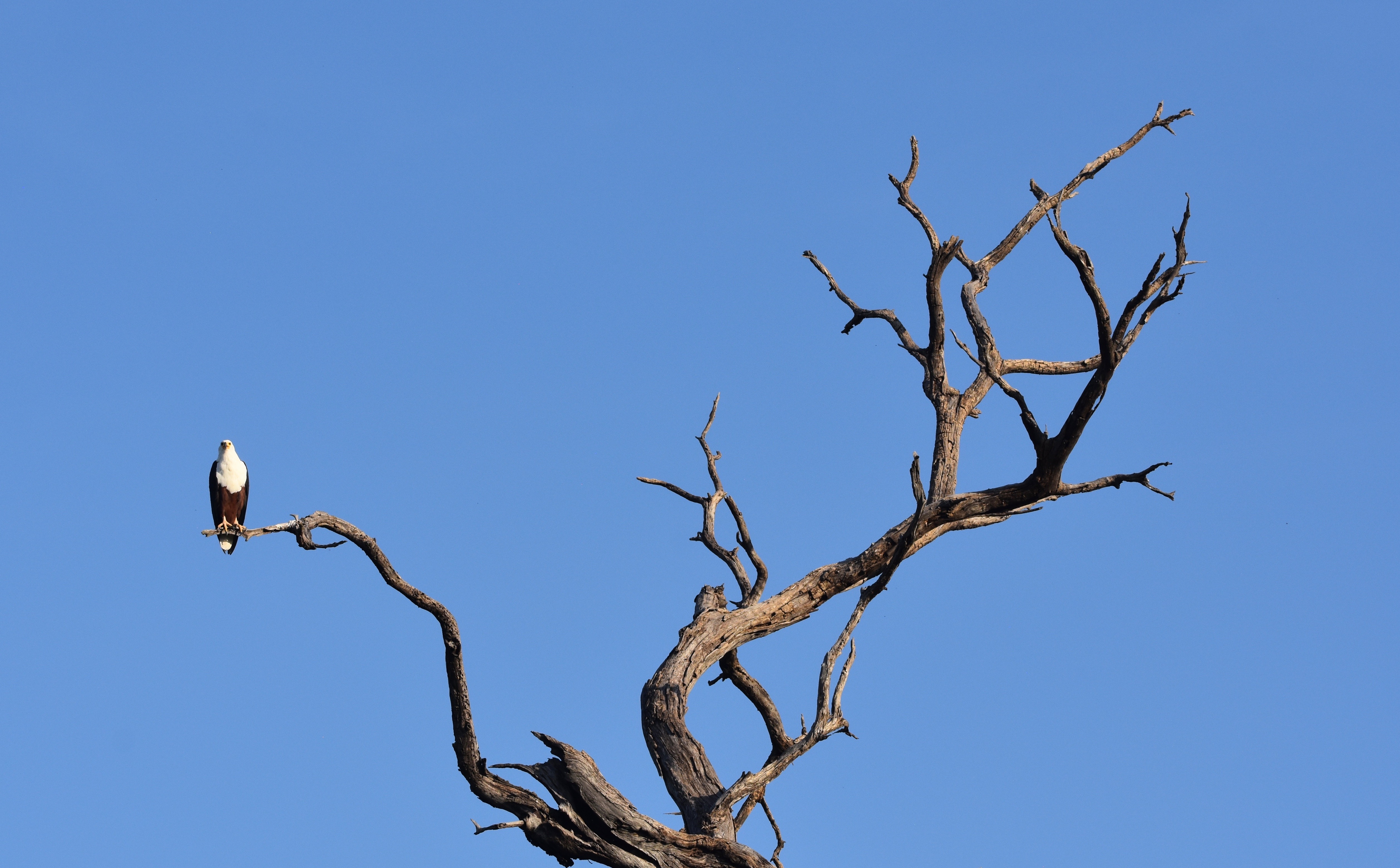
Or a live tree for that matter.
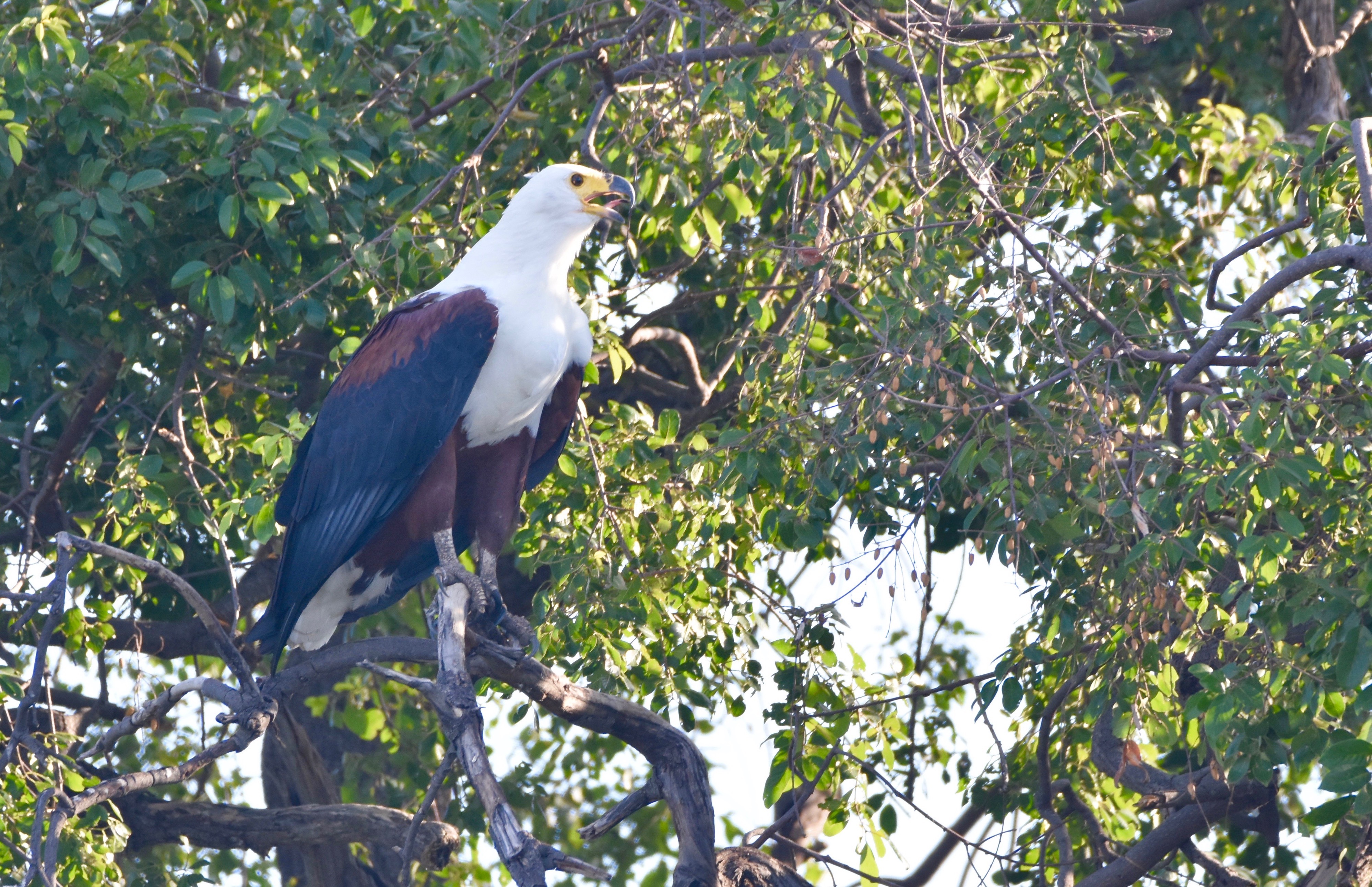
The most unusual bird in the Chobe River area is undoubtedly the black heron. From this photo you would not guess why – it just looks like another of the many species of herons and egrets in southern Africa.
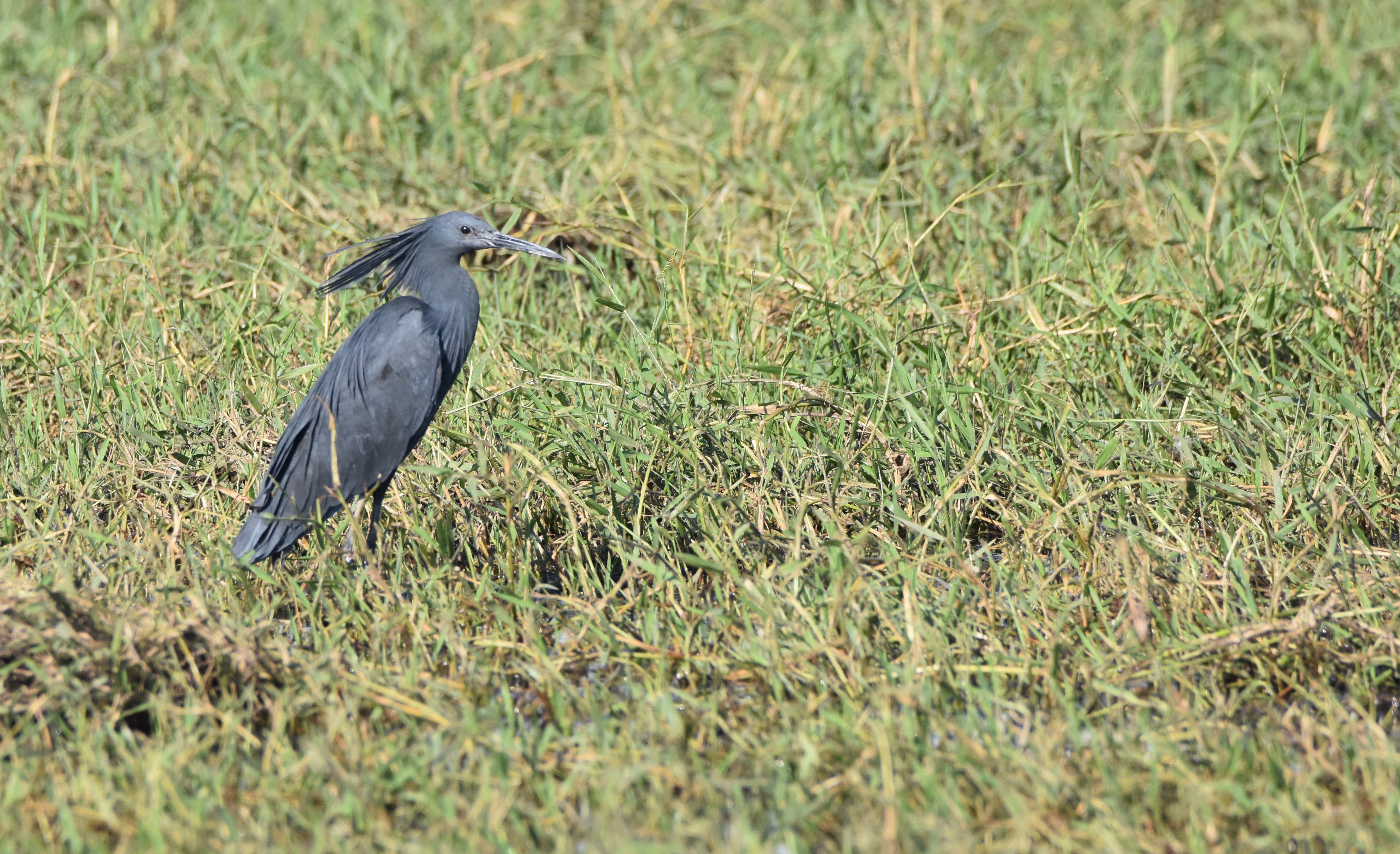
But when you see the black heron fold its wings over its head to create shade which attracts tiny fish to their doom, you know why it is also called the umbrella bird.
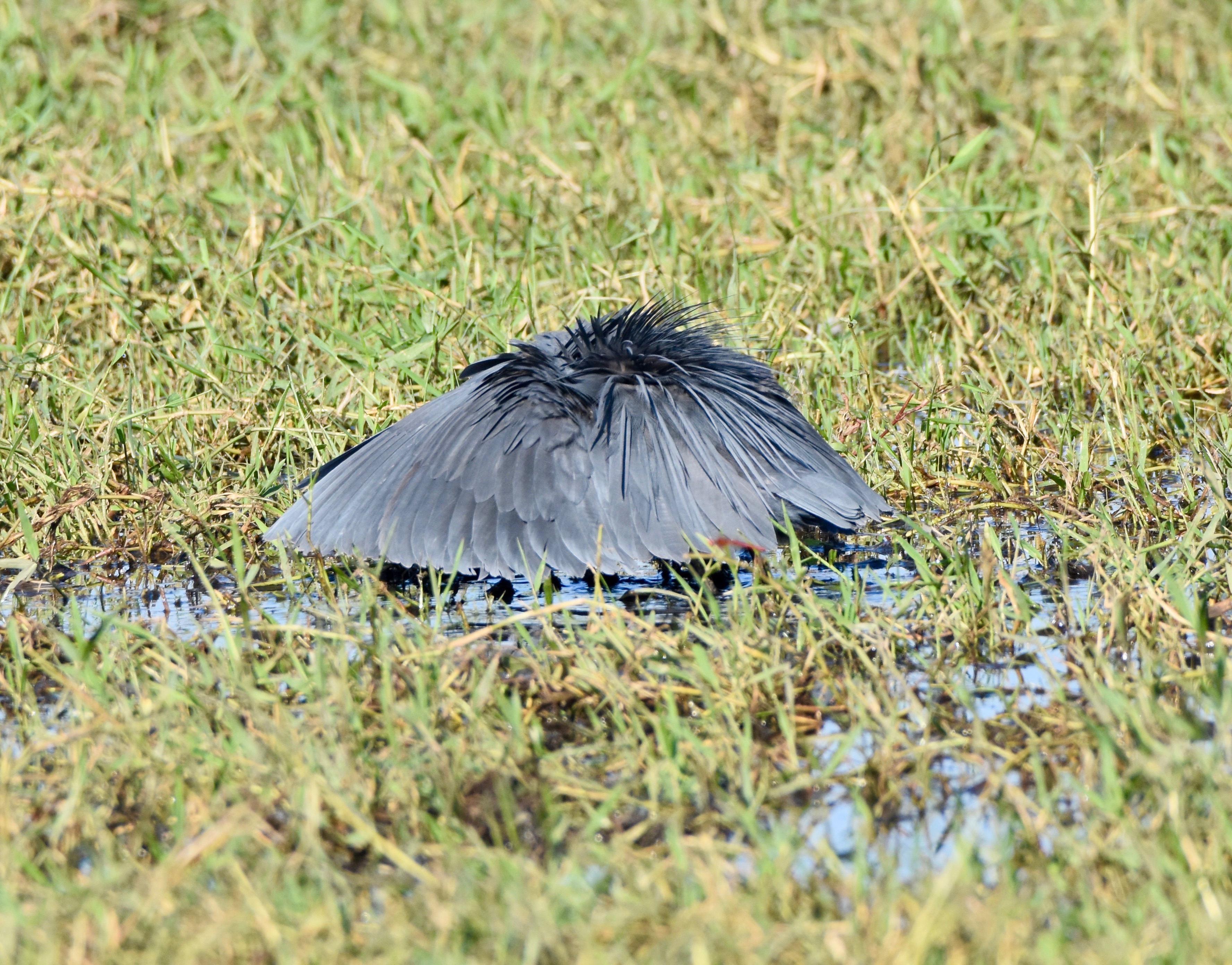
This is one the prettiest of the many shore birds you’ll see along the Chobe River – the blacksmith lapwing.
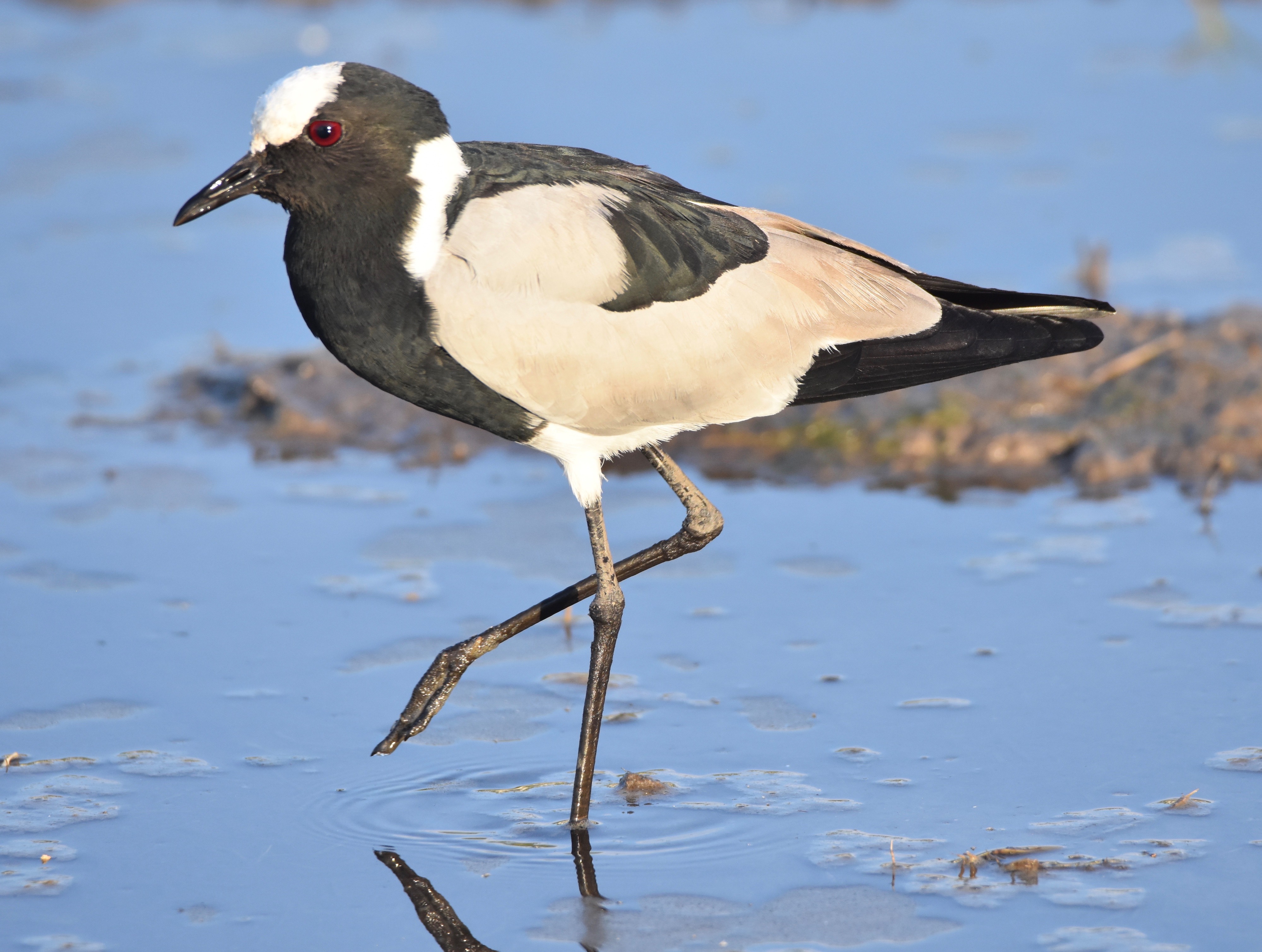
The aptly named Goliath heron is the largest of the African herons and quite majestic as it slowly takes flight, the B-52 of birds.
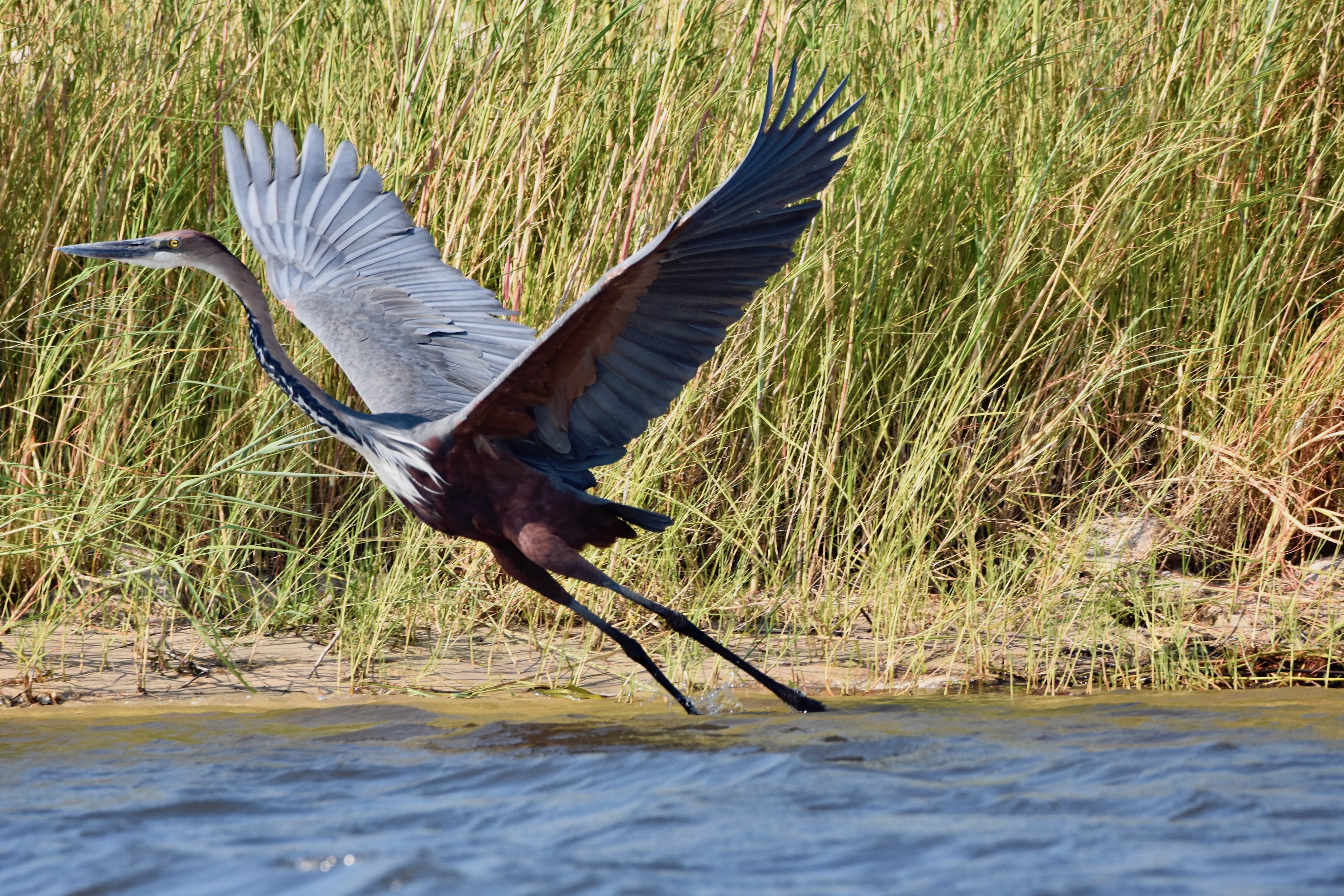
And then there are the kingfishers, one of my favourite birds because of their hard work ethic. They might take ten or more attempts to catch a fish, but they never give up. This is the colourful woodland kingfisher.
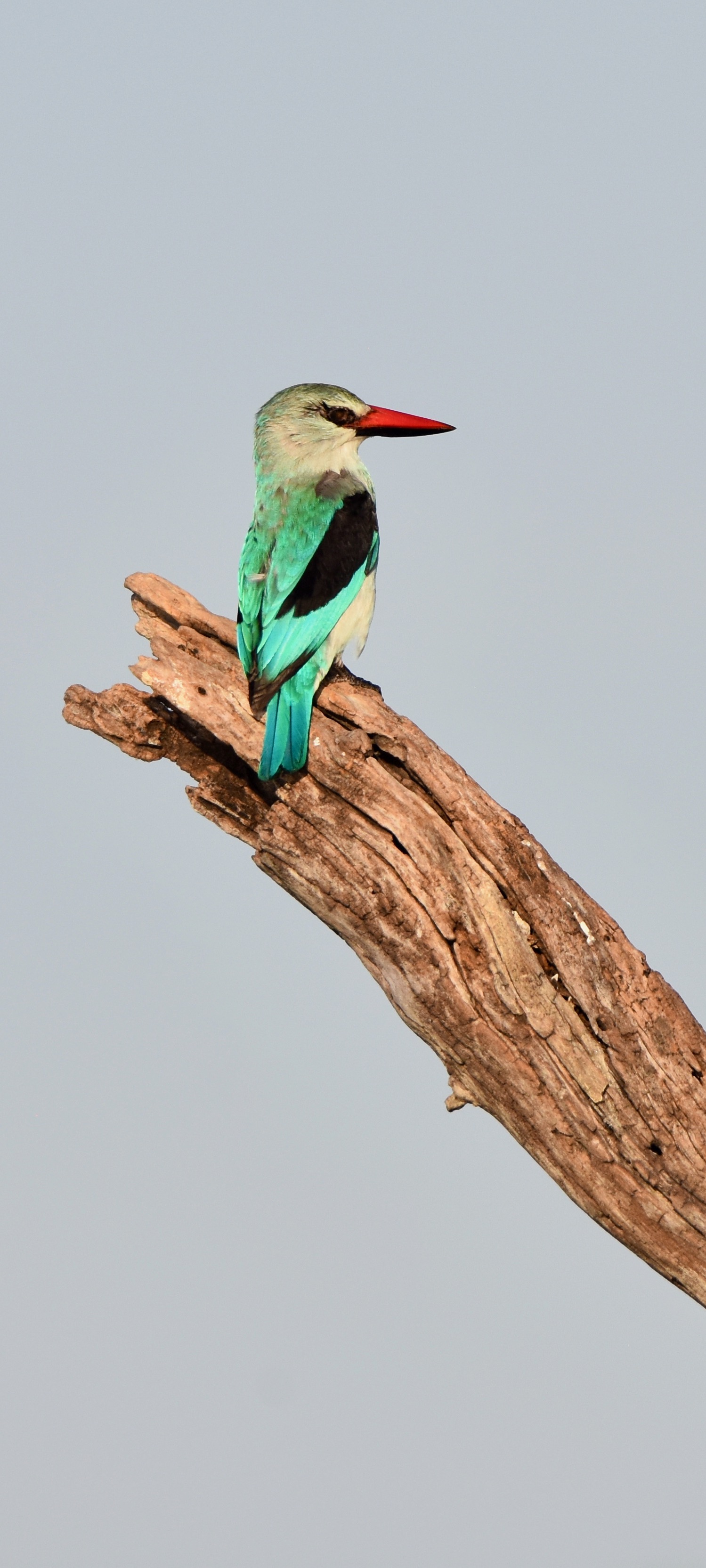
And the wonderful black and white pied kingfisher.
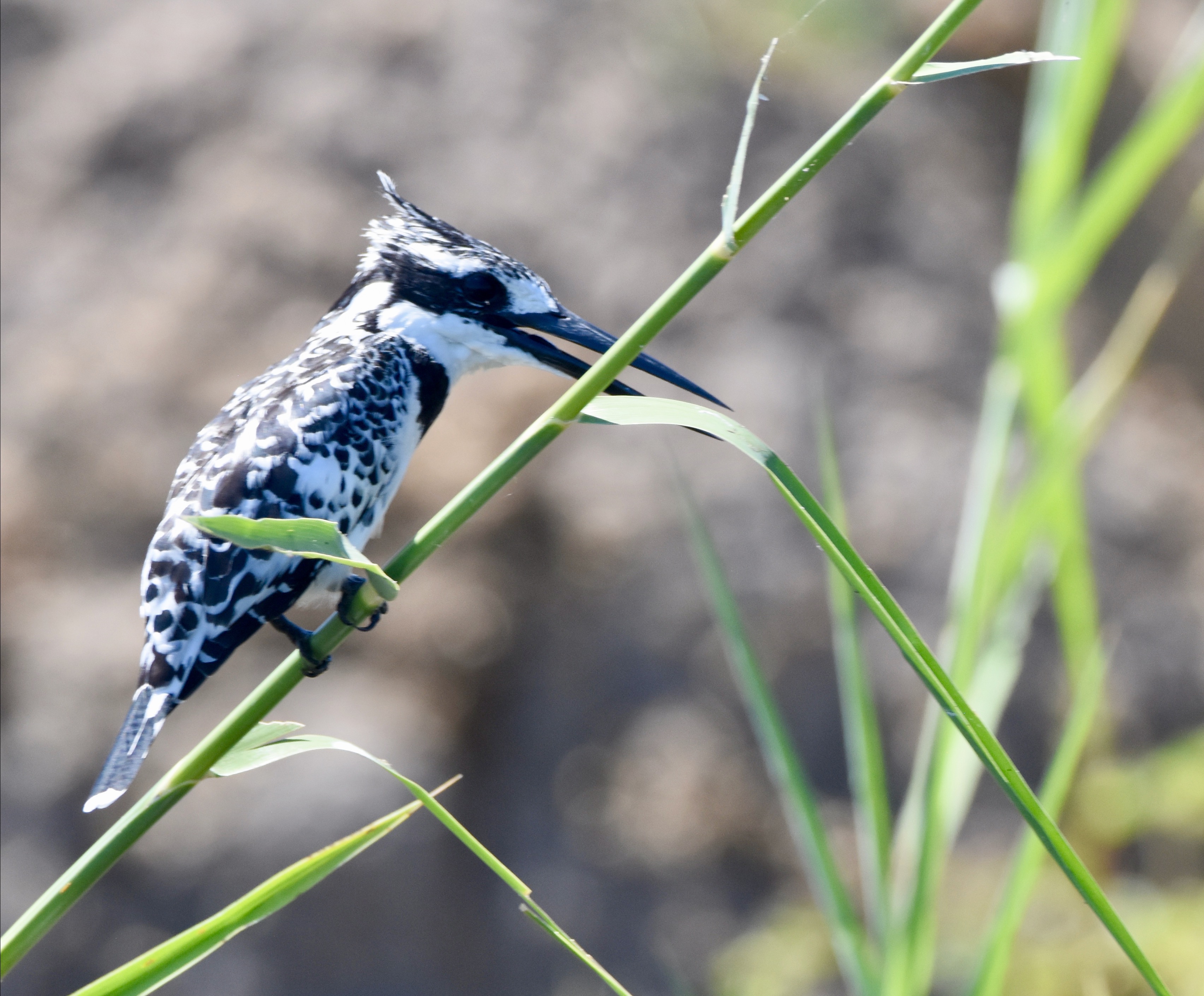
I could go on and on with photos of dozens more species, but will conclude with a couple of very colourful birds. This is a pair of white-fronted bee eaters that hung around the dock and whipped out to pick off insects on the fly.
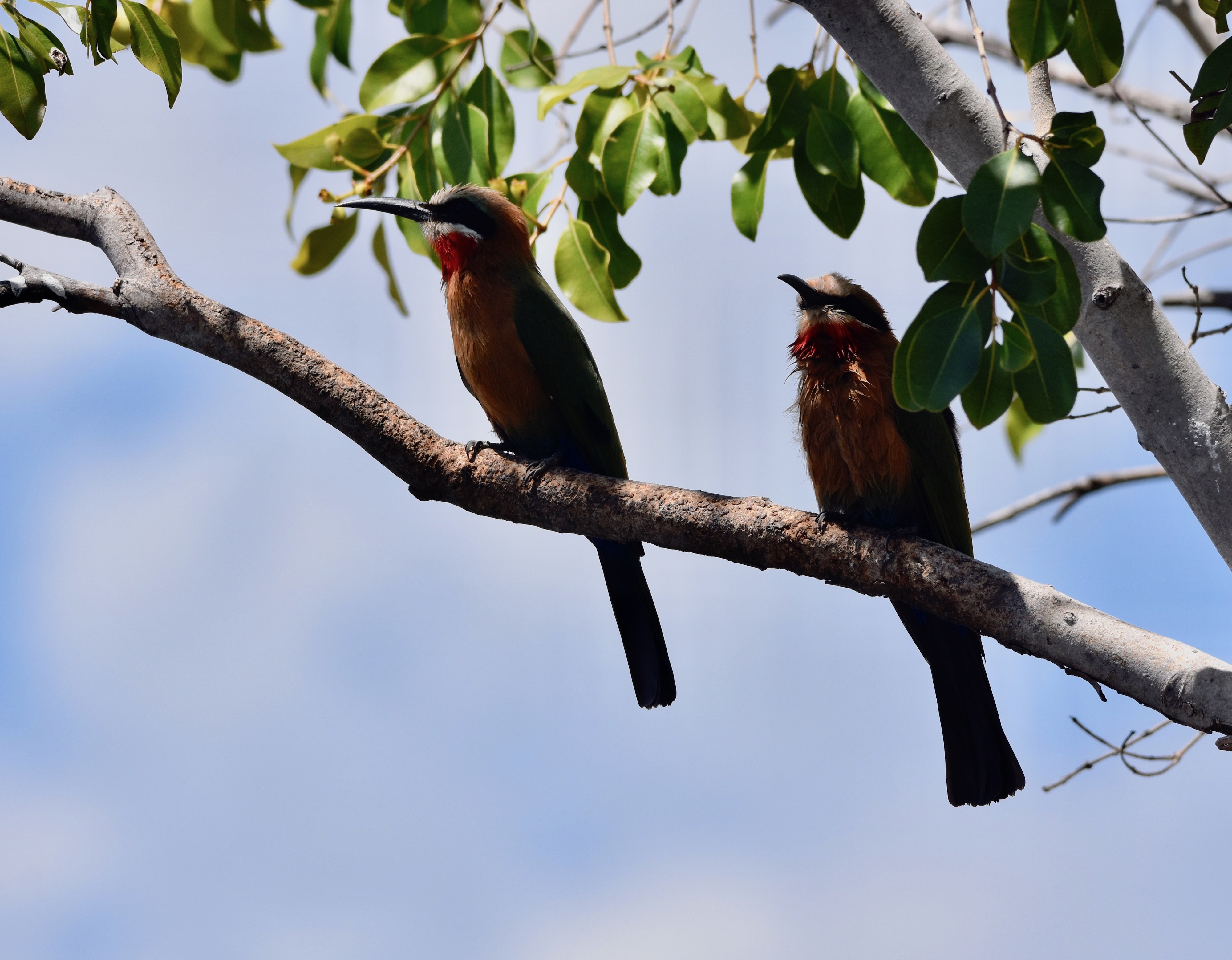
And their cousins, the European bee eater.
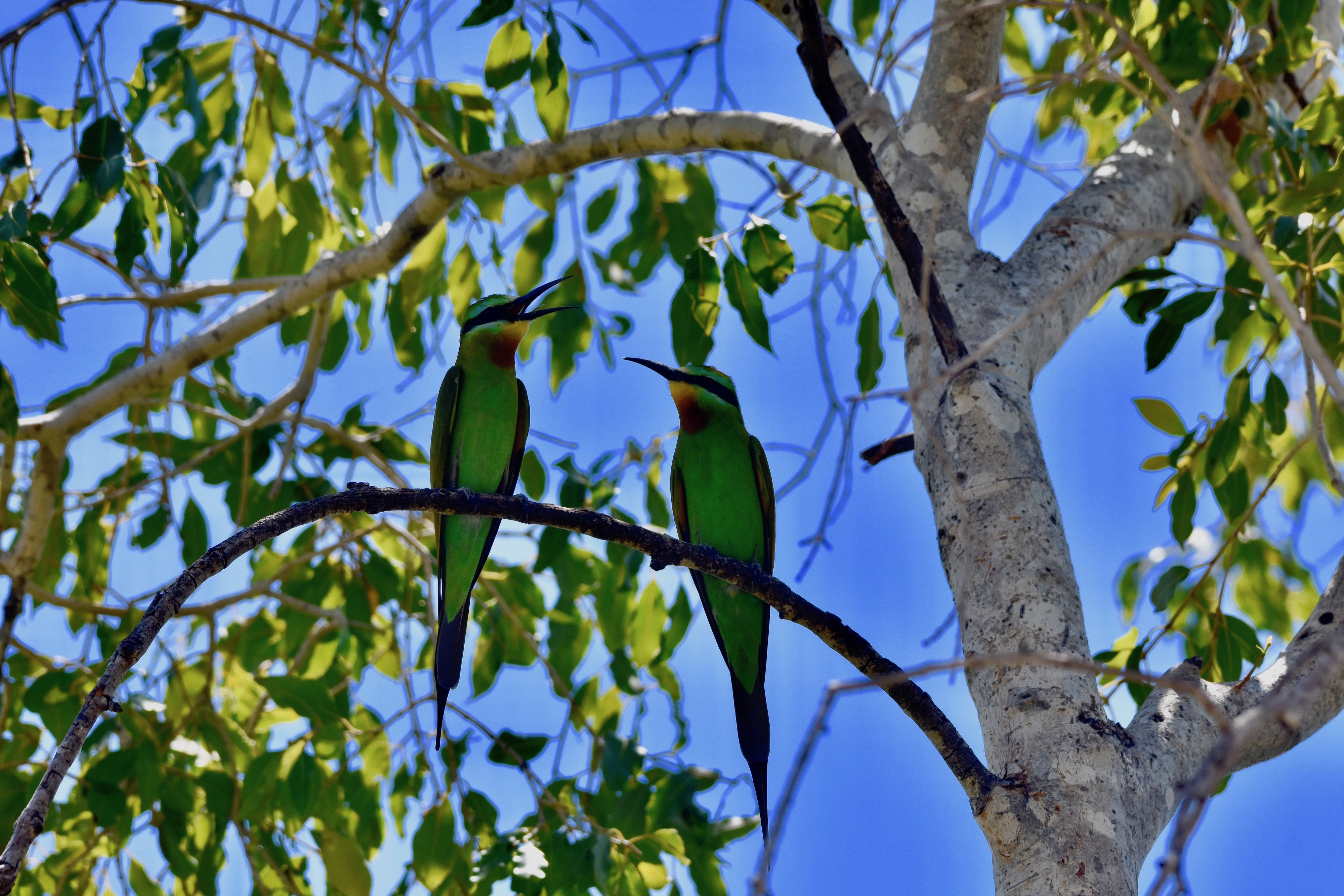
Alas, we must leave the Chobe River and head for the Okavango delta, but not before saying goodbye to our great guide Felix. It was two days of absolute heaven on earth.
